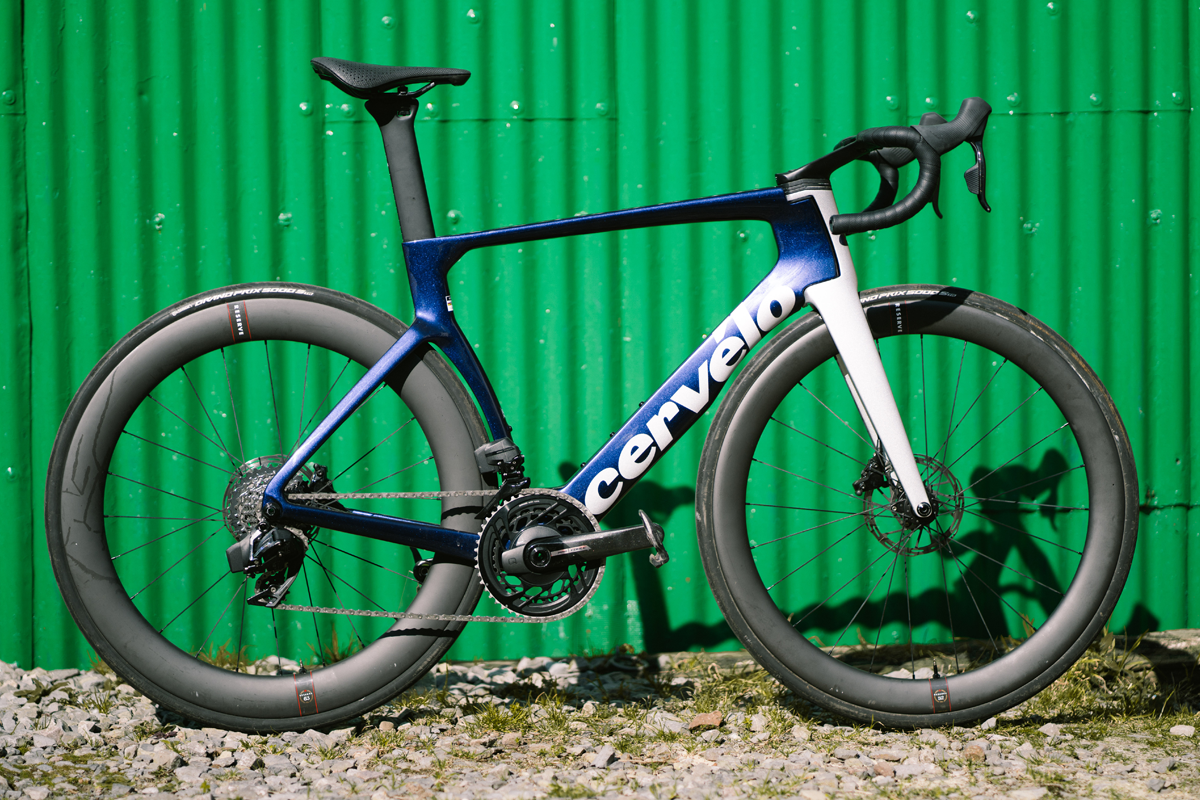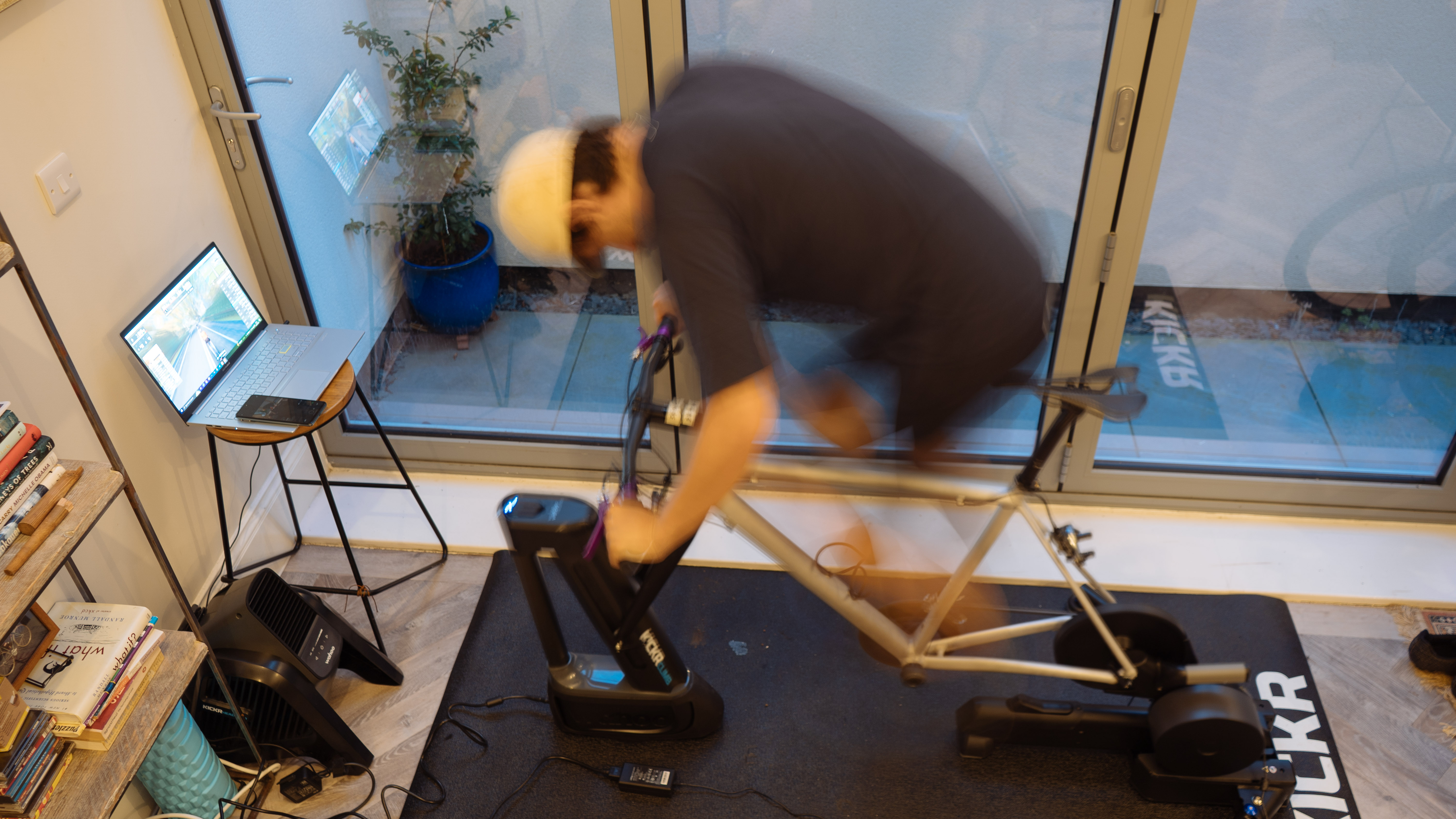Best road bikes 2025: Drop-bar bikes ridden, rated and ranked
The best road bikes from race-ready rigs to durable steel that will stand the test of time

The best road bikes offer a bewildering array of choices, with many road bikes aimed at specific uses. The differences between two road bikes can appear nuanced on the surface but have huge effects on a bike's performance. So how do you know which option is the best for you?
Understandably, different riders will have different demands: are you a racer, climber or roads less travelled adventurer? In this guide, we've narrowed down our picks to a single bike in each category so there is a bike for everyone. There is also a detailed explainer at the bottom to help you make the right road bike choice based on your needs.
Bear in mind this guide is the crème de la crème of road bikes but there are plenty more options in our best aero road bikes, the best lightweight bikes and the best endurance bike guides if you want to be more specialised. If carbon isn't your preference, then we also have guides to the best steel bikes and the best aluminium road bikes, while the best budget road bikes cover lower-priced options.
Here at Cyclingnews, our job is to test and review bikes, so you can be confident in our selection of the best road bikes. Our team of expert reviewers have ridden all the best road bikes from leading brands and has chosen the Specialized Tarmac SL8 as our best all-around race bike but there are plenty more great options to pick from. If you want more guidance on how to choose the best road bike for you, there's a useful buyer's guide lower down the page too.
Best road bikes: Quick list
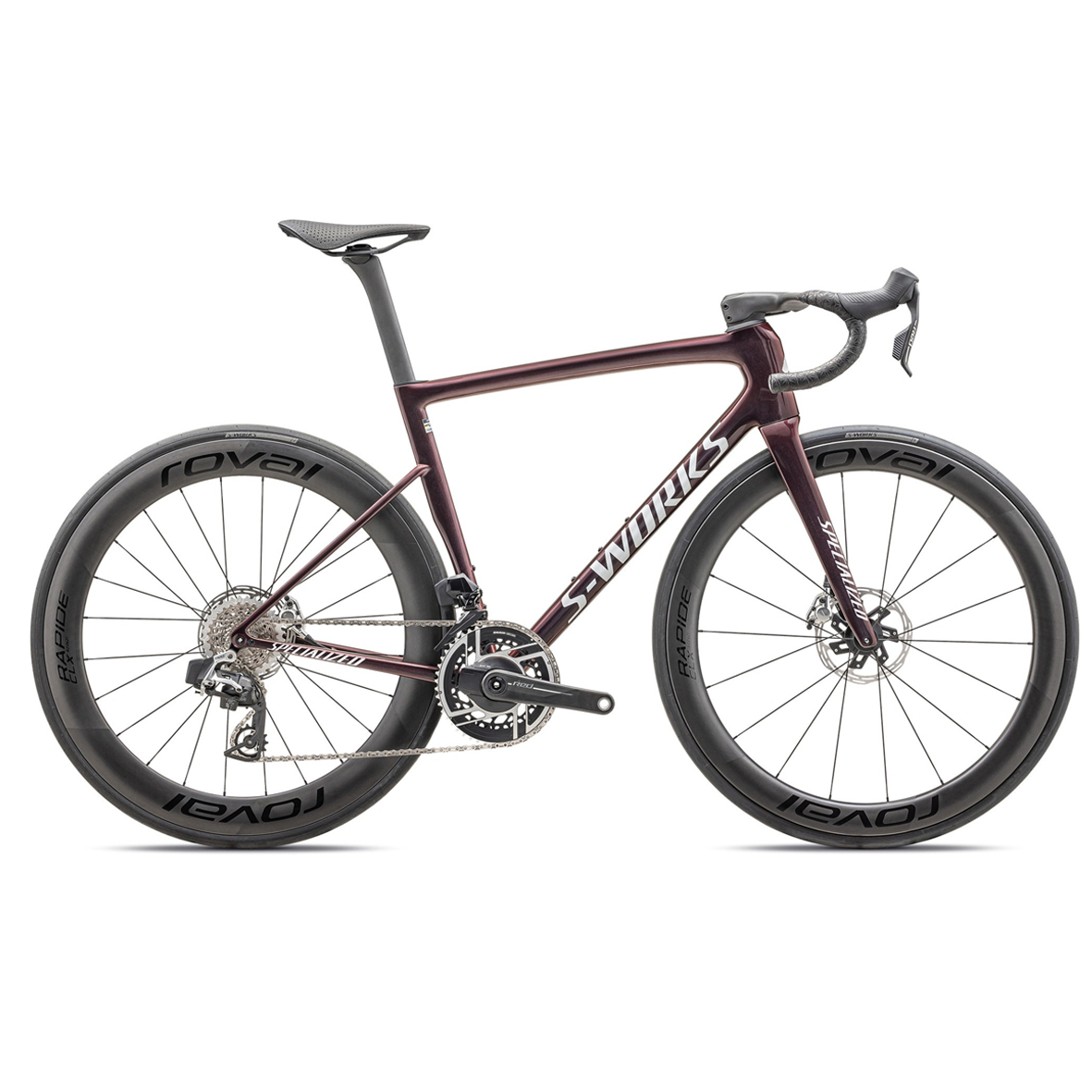
We reckon the Tarmac SL8 is the best all-round race bike, with low weight and sharp handling, although you can't change the spec to suit your bike fit.

The Factor OSTRO VAM was one of the fastest when we tested 11 superbikes in the wind tunnel, while also being the lightest on test. If you want to win a bike race, then this is ultimately one of the best options on the market.
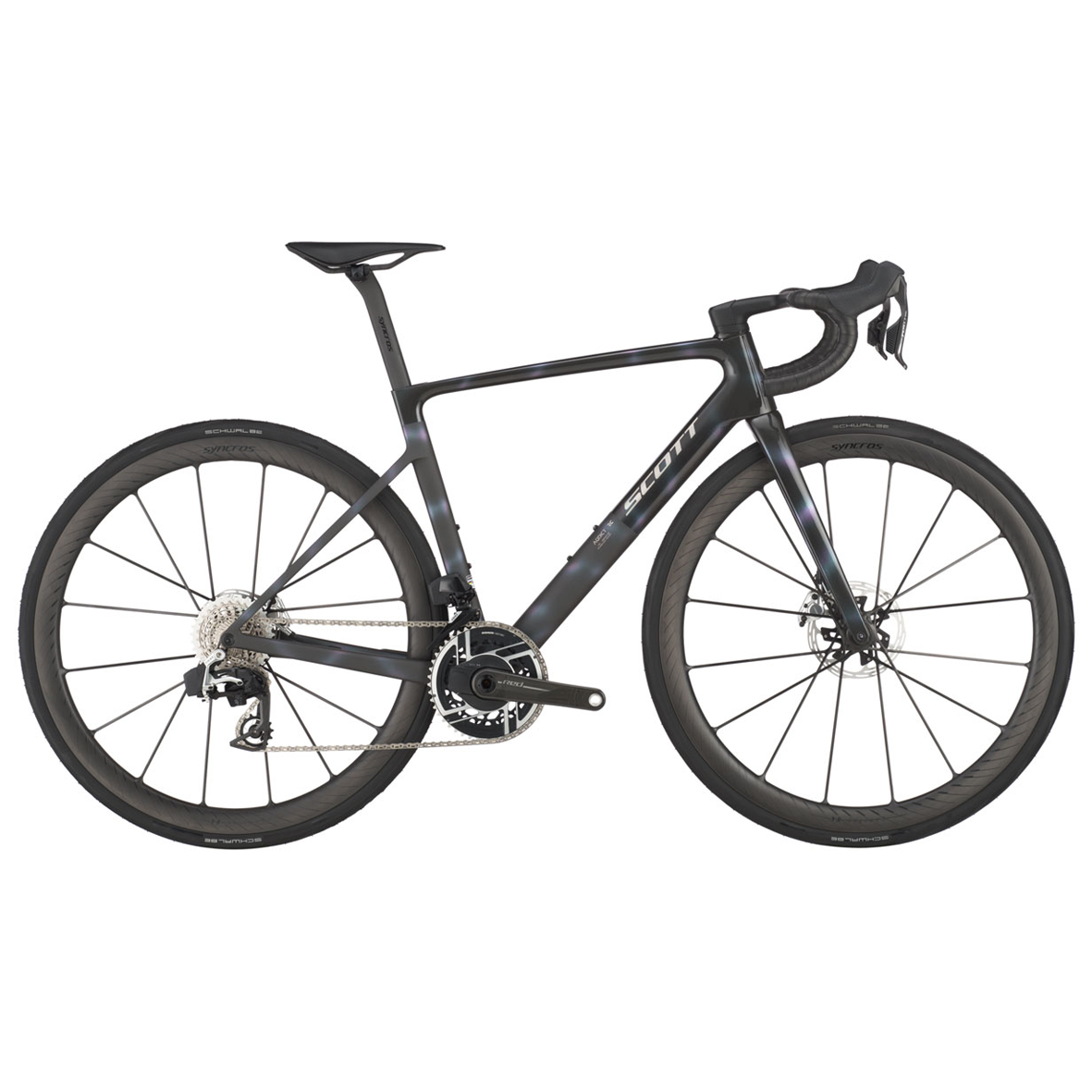
The Scott Addict RC Ultimate is phenomenally lightweight and backed up by impeccable handling and a flawless build too.
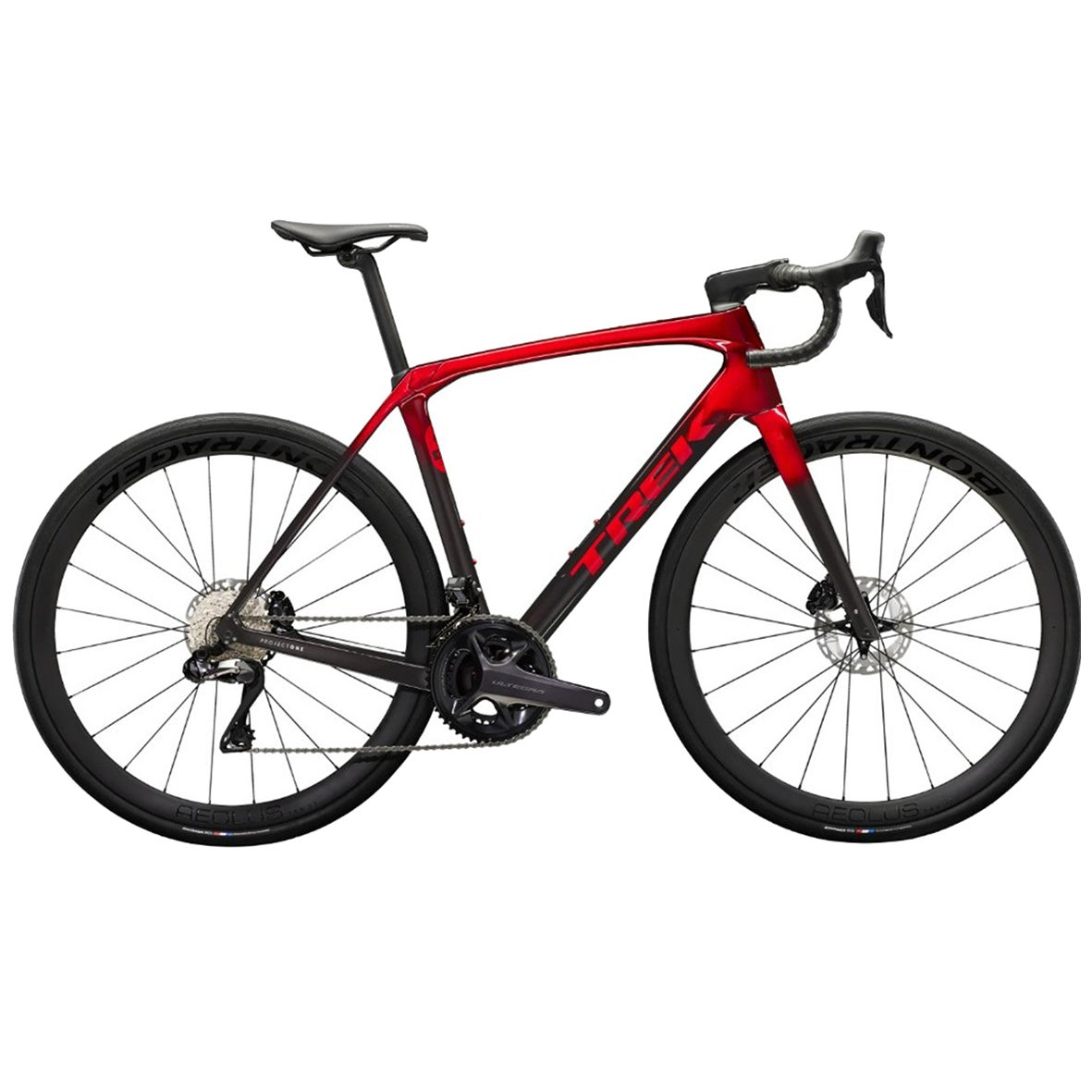
The Domane is comfortable and has wide tyre clearance, with in-frame storage on carbon bikes. There are more affordable specs as well as premium builds.

The 2025 Dogma F is lighter and more aero but retains the superb handling that's a hallmark of Pinarello's premium race bike.
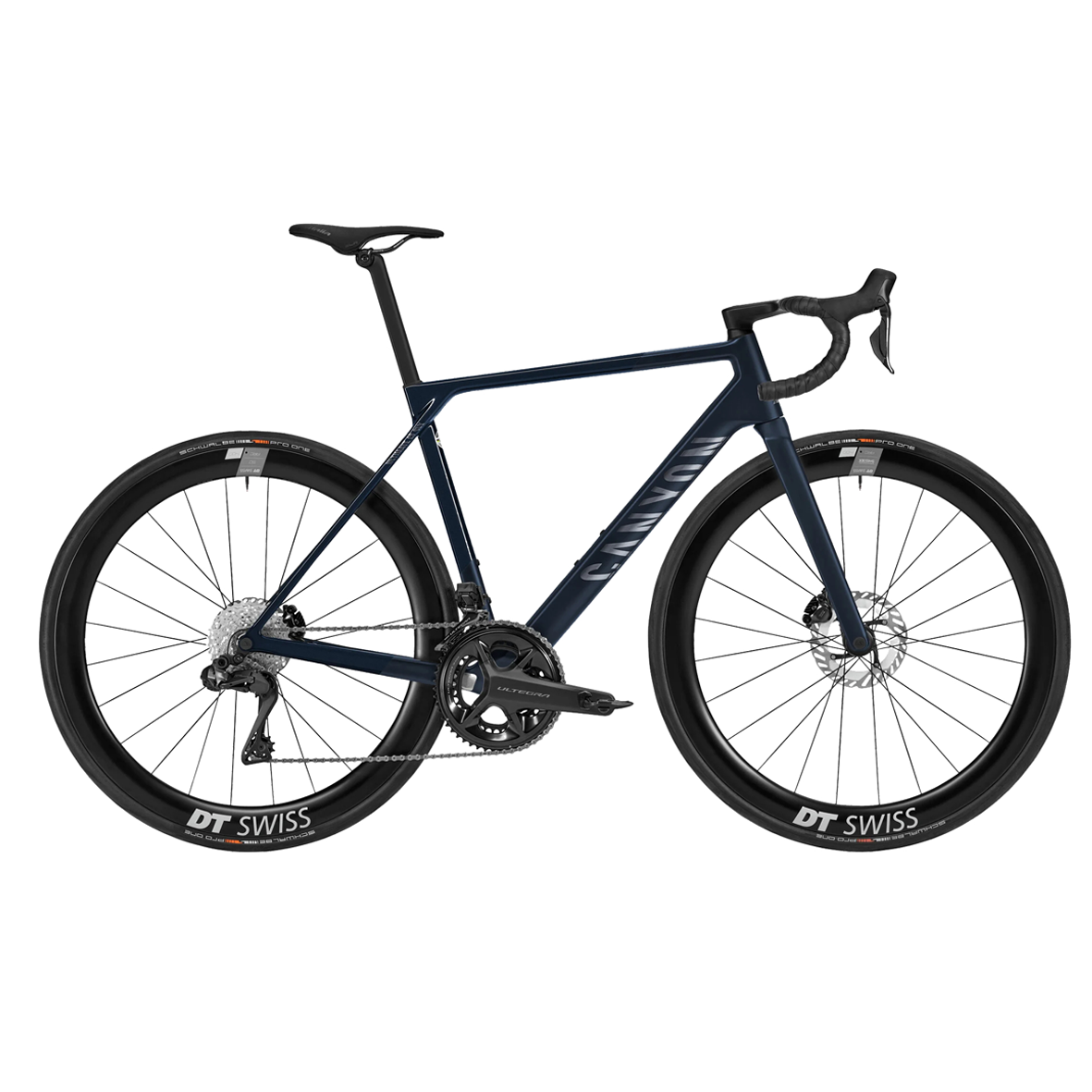
There's a wide range of well-spaced bikes in the Ultimate range, which offers balanced handling, low weight and aero features.
Last updated on 02nd of July 2025
The guide received an update to the content and products. More road bikes were added to the guide, all of which are backed up by reviews and lab testing.
Best road bikes available today
You can trust Cyclingnews
Best all-round race bike
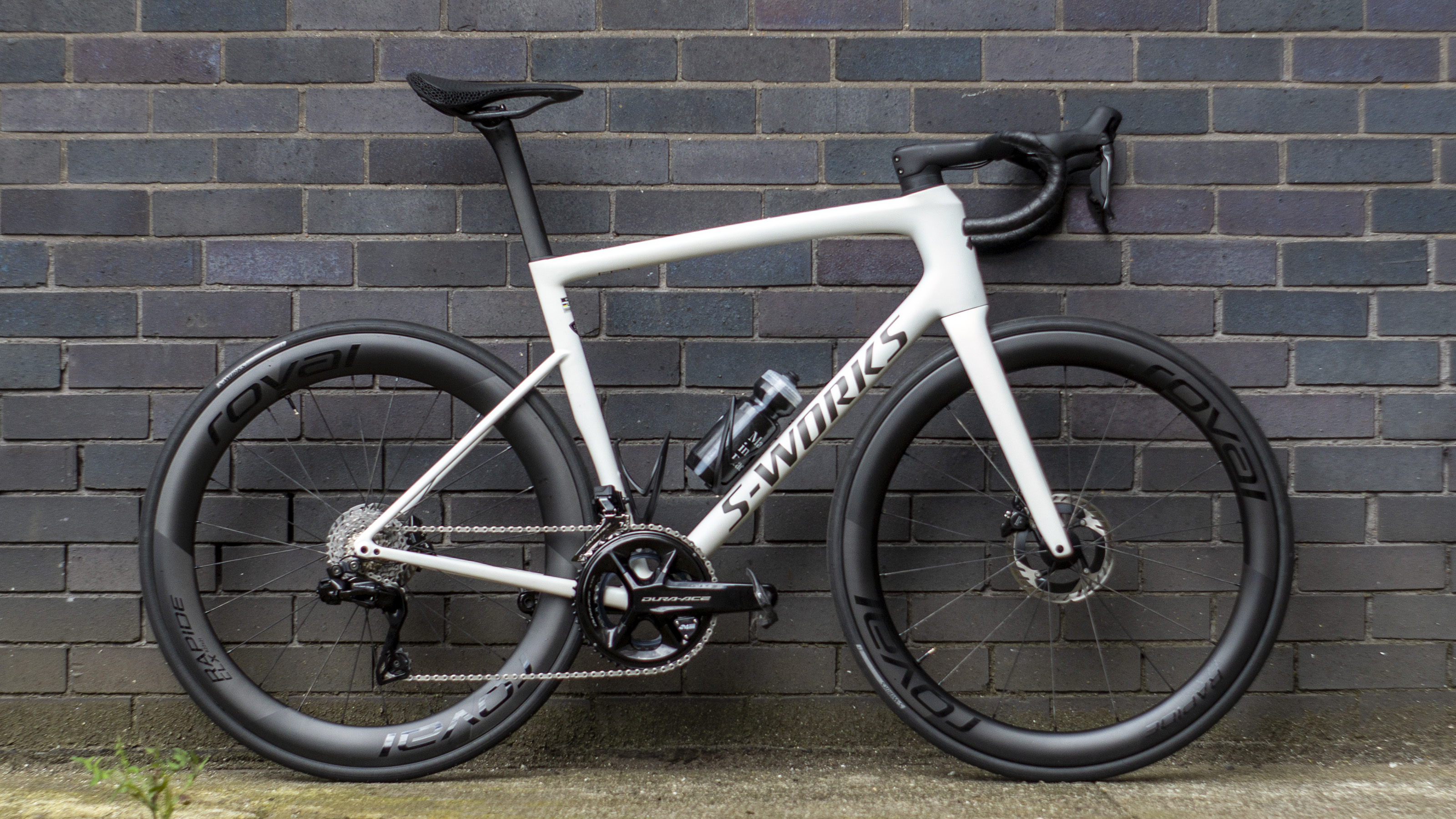
Specifications
Reasons to buy
Reasons to avoid
✅ You want pro-level performance: The Tarmac SL8 has the race wins to prove its capabilities.
✅ You want low weight: The top spec dips under 6.8kg, but at a price.
❌ You're looking for the most aero bike: The Tarmac came out mid-pack in our wind tunnel tests.
❌ You want to choose your bar geometry: Specialized doesn't let you choose width/effective stem length at purchase.
The Specialized Tarmac has been at the fore of pro racing for over a decade, continuing to notch up a stream of wins in top races. Although the latest SL8's updates from the Tarmac SL7 may seem slight, they're significant.
For the premium S-Works model, that includes a 6.6kg weight, dropping 200g so that the bike now sits on the UCI 6.8kg weight limit when ready to race.
The SL8's aerodynamics have also been improved, making it a claimed 16.6 seconds faster over 40km; although without a rider the bike came out mid-pack in our own wind tunnel tests (available in full to Cyclingnews subscribers), it's within the margin of error to come out third best of the 11 superbikes tested. With a rider onboard, it was the fastest, although with a greater margin of error.
The aero gains are largely due to the one-piece bar/stem, although Specialized doesn't allow you to choose a different effective stem length or bar width (or crank length) when you buy the bike. The lowest Expert spec, which I've also ridden, does come with a two-piece bar and stem, although again the dimensions, along with the crank length, are determined by the frame size and not user-configurable.
The frame is claimed to be both stiffer and more comfortable than the SL7, the latter due to a thinning down of the rear triangle, where aero gains are less than at the new 'speed sniffer' head tube.
While weight perforce increases lower down the Tarmac SL8 range, those aero and comfort benefits carry over into the lower spec models. These are made of FACT 10r carbon fibre rather than FACT 12r, although there's only around 100g difference in raw frame weight between the two.
I've ridden three different specs of the Tarmac SL8 over close to a year and felt right at home with the responsive ride feel and excellent handling when swapping from the SL7 and SL6. Accelerating and holding speed felt easy and there's enough compliance for comfort, albeit this is a race bike.
Riders looking for a lower-priced bike than the S-Works model I rode can find Tarmac SL8 models starting at around half the price, but that's still a significant outlay.
Read our full Specialized S-Works Tarmac SL8 review for more.
Best aero bike

Specifications
Reasons to buy
Reasons to avoid
✅ You want the apex aero bike: According to our wind tunnel tests, this is it.
✅ You want great ride quality: Despite its superbike credentials, the Ostro VAM rides really well.
❌ You want a lower spec: Factor's spec options are all top drawer.
❌ You don't want to stand out: The Ostro VAM and Black Inc wheelset's standard decals are pretty lairy.
I was a bit confused by the positioning of the latest Ostro VAM as a lightweight aero bike alongside the O2 VAM, an aero lightweight bike launched a few months prior, but the two bikes stand apart on their own merits.
At 7.2kg with pedals, the Ostro VAM's weight is in line with other premium bikes we've reviewed, with the 1,296g wheelset from sister brand Black Inc a significant contributor.
It's an impressive ride, which I found among the best all-round race bikes I've ridden, smooth while still offering pro-level power transfer. The Ostro VAM also holds the crown for the most aero bike of the 11 superbikes Cyclingnews wind tunnel tested, as well as being the second lightest. And that's without the aero bottle cages the bike is usually sold with.
It follows the current trend for deep front-end tubes where the aero gains are greatest and a skinnier rear to keep weight down, also seen in the Specialized Tarmac SL8, Giant Propel and others.
Sold as a frameset and in relatively few builds, you can choose and configure your own spec extensively, including 28 different bar/stem sizes.
But like Pinarello with its Dogmas, Factor makes few concessions to the amateur rider. It's offering a pro-level experience with a pro-level price tag and there's little depth to the range.
Read our full review of the Factor Ostro VAM for more details.
Best lightweight bike
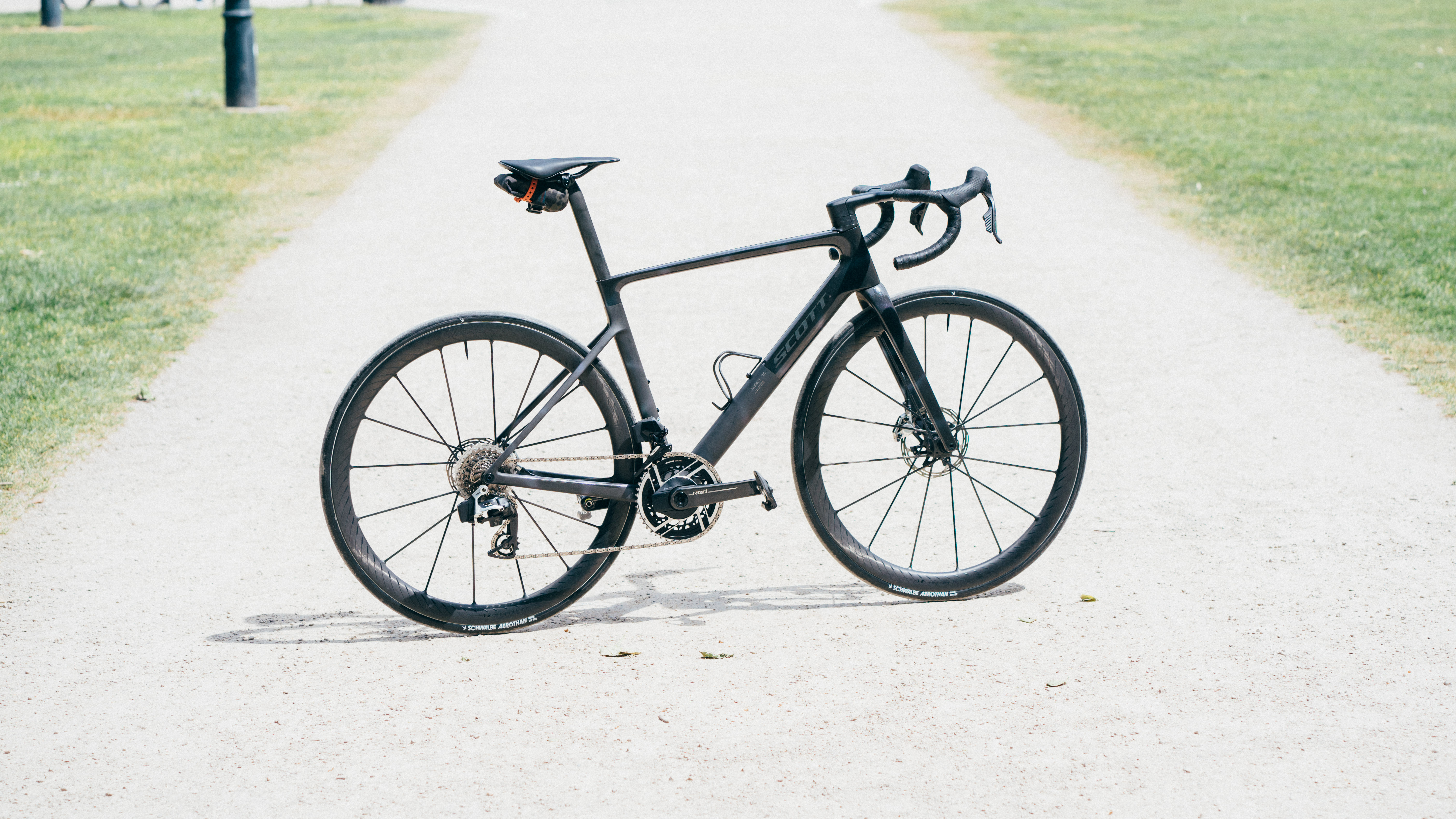
Specifications
Reasons to buy
Reasons to avoid
✅ You want a climber's dream bike: The Addict's ability to climb is almost unmatched and the bike's handling is sublime.
✅ You want a little bit of aero: Although Scott's main focus was climbing prowess, the Addict still features enough aero touches to efficiently cover flat sections.
❌ You want more all-around capability: You're buying a specialist climbing machine with the Addict.
Weight isn't everything, however, if you're looking for the ultimate climbing bike, then it's going to be more of a priority. The latest Scott Addict Ultimate RC is one of the lightest bikes around, with our review 54cm bike tipping the scales at 6.4kg, and that’s with pedals, a bottle cage, and a clip-on computer mount.
As you would expect from such a featherweight bike, the Addict is a joy on long climbs and its ability to react to gradient changes is almost automatic. If you're faced with steep ramps over 15 percent, the Addict is still capable of an impressive turn of acceleration that will thrust you upwards against gravity's wishes.
While the Addict's key performance attribute is how well it climbs, arguably, it's on the way back down that the bike truly shines. Without the potential compromises of all-out straightline aero performance, Scott has been able to make the Addict a lot more engaging to ride. Our reviewer Will Jones found the handling to be outstanding, carving through corners with an instinctual level of precision and accuracy.
The effortless climbing and sublime handling, with just a touch of aero for good measure, make it a really compelling all-round bike for those after high performance without having to go all-out aero.
Read our full review of the Scott Addict RC Ultimate for more details.
Best endurance bike

Specifications
Reasons to buy
Reasons to avoid
✅ You want ride comfort: Wide tyres and IsoSpeed offer a great ride.
✅ You want plenty of model choice: The Gen 4 Domane offers 17 frame/component specs.
❌ You want more all-road capability: The Domane is still best on tarmac.
❌ You want a plusher ride: The Domane has lost some of its road-smoothing in favour of a lower weight and more responsive ride.
While the Tarmac and Factor ranges are premium priced, the Trek Domane range has much greater depth.
There are two grades of carbon and an alloy frame, available with a wide range of groupsets. There's even a rim brake base model, so there's loads of choice if your budget doesn't stretch to the expensive, top-spec Domane SLR 9 we reviewed.
The latest Generation 4 carbon Domanes include non-adjustable IsoSpeed at the rear only but still offer 38mm tyre clearance, in-frame storage, three bottle cage mounts, a top tube mounting point and aero tube profiles. There's hidden cabling and a two-piece cockpit for adjustability.
I didn't find the Domane as smooth as I'd expected, but that's not a bad thing as there's a more direct ride feel than with the previous version, along with significant weight loss.
Swap from the fitted 32mm tyres to take advantage of the clearance on offer and you could increase the plushness, or fit gravel bike tyres for all-road duties. I did take the Domane down gravel paths, where its stability shines, although it's still best on paved roads.
Read our full Trek Domane SLR 9 review for more on the top-spec of Trek's endurance bike and why a lower spec may be a better choice.
Best handling road bike
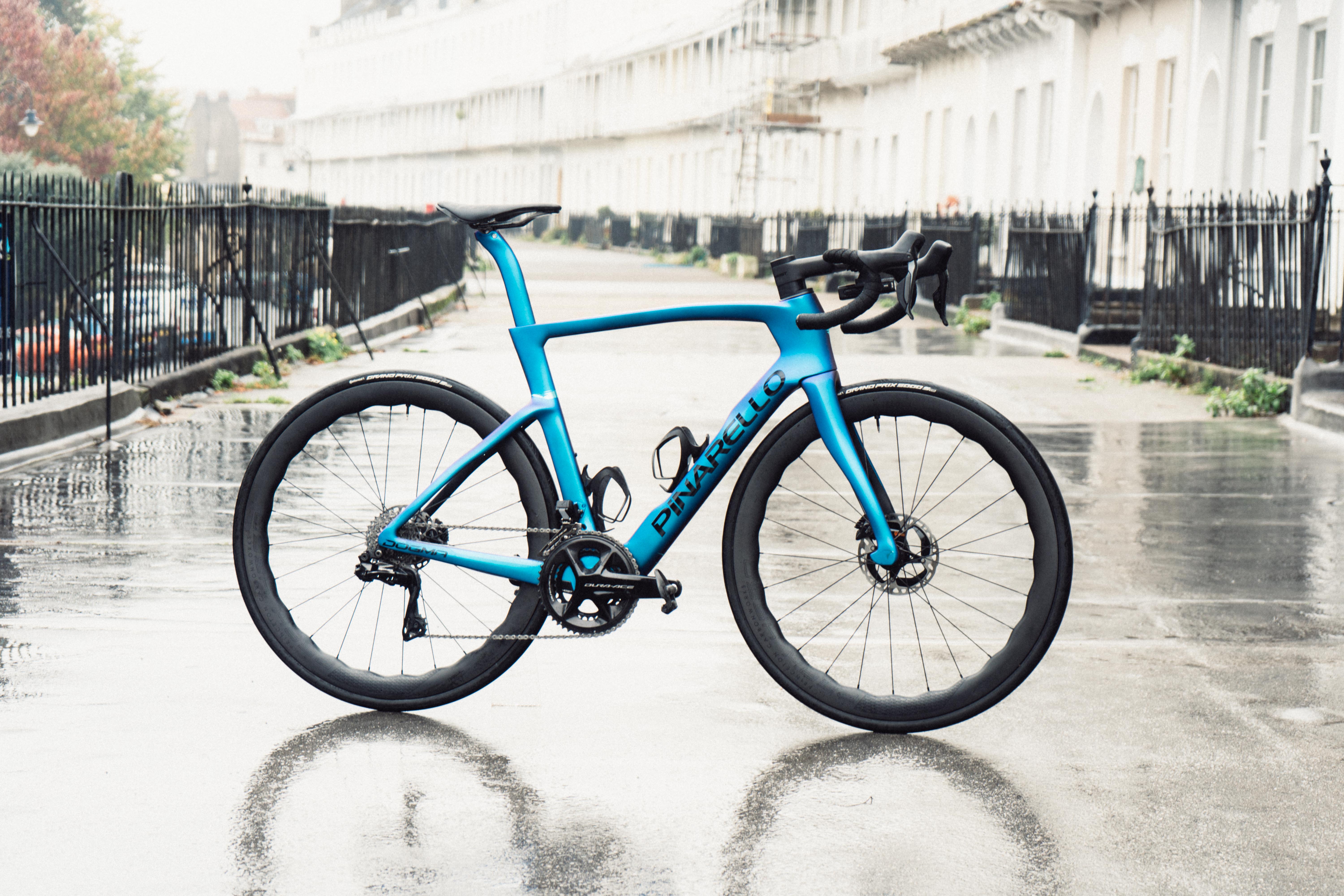
Specifications
Reasons to buy
Reasons to avoid
✅ You want the best handling: The Dogma F is the best-handling bike our tester has ridden.
✅ You want a top spec: Dura-Ace: tick, Princeton wheels: tick.
❌ You don't want to spend £12.5k: The Dogma F is extravagantly expensive.
❌ You want to fly under the radar: Everyone recognises a Dogma, even non-cyclists.
The Pinarello Dogma has been a feature of top-tier racing through multiple iterations and suffixes. The 2025 Dogma F hasn't changed its name, but it has become more aero and lighter in weight than its predecessor.
The (marginal) aero gains come from a deeper head tube that's also narrower and an extended 'keel' ahead of the bottom bracket. The bike came out mid-pack in our wind tunnel testing, comparable to the S-Works Tarmac SL8.
There are updates to the bar/stem, which is now slimmer, more flared, lighter and available in a huge range of dimensions. There are many frame sizes available too.
But it's the handling that most impressed tester Will, who descended faster than ever before, while the Dogma F still felt almost serene. At 7.2kg, the Dogma F is on par weight-wise with the competition too, having shed a little weight from its predecessor. Power transfer through the huge bottom bracket shell is first-rate, allowing Will to garner a slew of PBs and Strava top 10s on climbs around Bristol and shave 3 minutes off his time on a 22km loop.
There's nothing to bemoan spec-wise, as you'd expect. Will loved the Princeton Peak 4550 wheels and the performance of Dura-Ace speaks for itself. Despite the pro-level performance on offer, the Dogma F remains very comfortable to ride though.
Read our feature on the 2025 Pinarello Dogma F for more.
Best budget race bike

Specifications
Reasons to buy
Reasons to avoid
✅ You want great value: Whether you're spending £2,500/$3,000 or four times that, the Ultimate has great specs.
✅ You want versatility: With 32mm tyre clearance and aero features, the Ultimate can be an all-road or a race bike.
❌ You want more stable handling: The Ultimate isn't the easiest to pilot downhill.
❌ You want a dedicated aero bike: The Canyon Aeroad is also great value, has the same geometry but is more aero.
Canyon builds the Ultimate in three different frame grades: CF SL, CF SLX and the pro level CFR and a current range of 14 specs, so there's a depth of choice with prices that start at £2,500/$3,000 and top out at £9,750/$10,500.
Will rode the CF SLX 8 Di2 for his review, but all three frame grades have the same frame shape, designed to offer low weight with aero benefits. All specs come with a one-piece carbon cockpit, with Canyon's adjustable width bars on higher spec versions and all offer an excellent component spec for their price, most including a power meter and all with quality wheels and tyres.
Will found the Ultimate to be predictable but still agile, although on the responsive end of the handling spectrum, making steep descents a little trickier. A swap from the supplied 25mm to 28mm tyres might help and there's room for 32mm rubber.
The Ultimate is a great climber though, thanks to the low weight and stiff frame, and rides nicely on the flat too. It's not averse to all-road riding either and the wide range of spec choices should make finding a bike to suit your needs and budget easier.
You can read more in Will's detailed review of the Canyon Ultimate CF SLX 8.
Best all-road bike
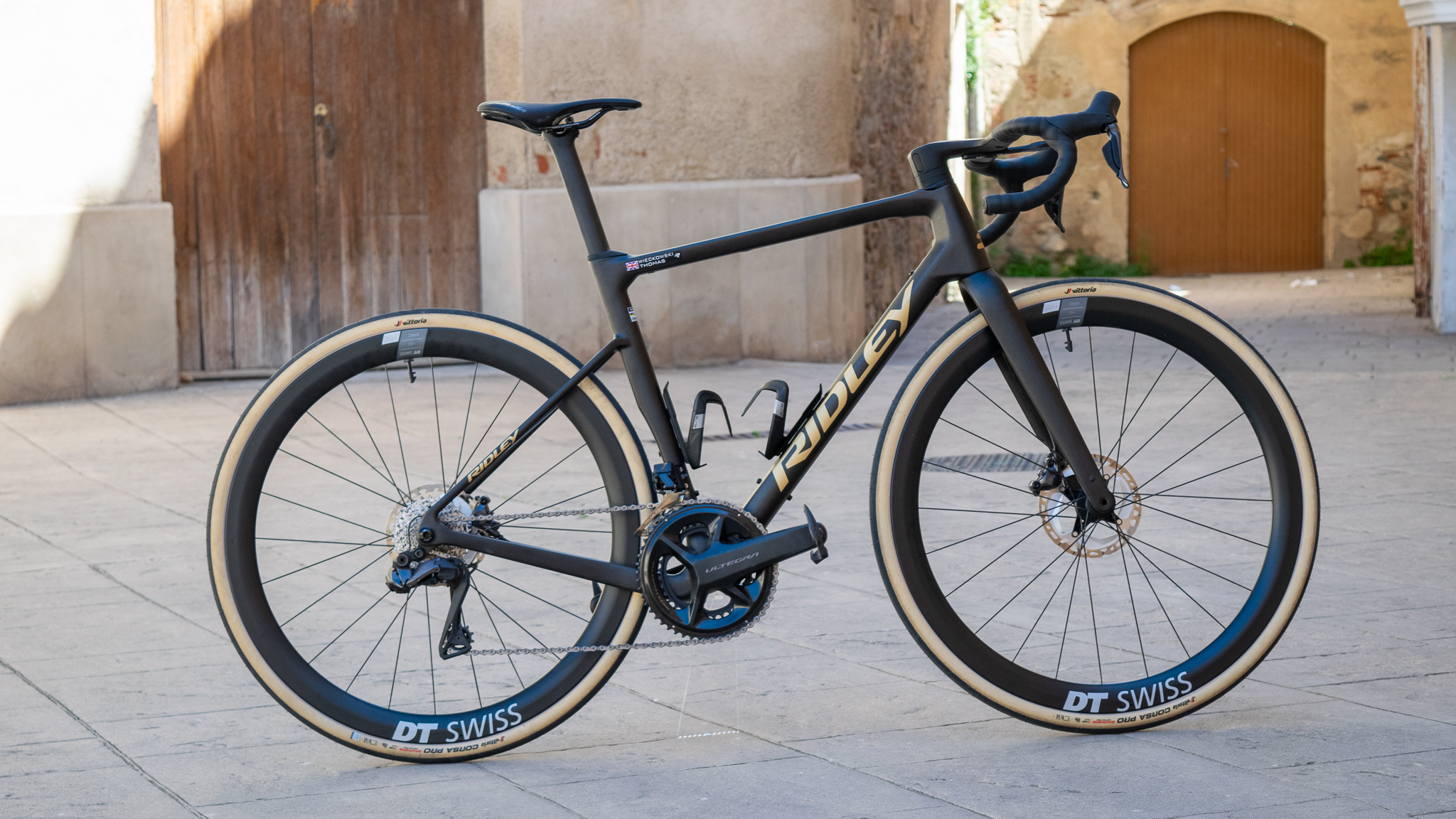
Specifications
Reasons to buy
Reasons to avoid
✅ You want a versatile frameset: The Grifn RS's 42mm tyre clearance allow you to fine-tune your ride.
✅ You want a racy ride feel: The Grifn RS's position and handling favour performance.
❌ You want narrower bars: The Grifn RS's bar/stem width is good for gravel, less so for road use.
❌ You want to keep the price down: The Grifn RS is expensive, with the frameset alone retailing for €4,999.
The Ridley Grifn RS is a lighter version of the original Ridley Grifn, that's more aero but shares its geometry. Ridley offers more roadie and more gravelly stock configurations and there are further options online, so you can choose how off-road you want to go.
At the launch, Tom rode a 1x SRAM Force XPLR AXS gravel spec as well as an Ultegra Di2 road spec back-to-back and came away impressed by both. The Grifn RS is comfortable, fast and looks good in both guises, with a position that's towards the racing end of the gravel spectrum.
Tyre clearance is 42mm, so you can fit either wider gravel tyres or narrower road bike tyres to suit your riding. If you want to go long, there's a full set of bag and bottle mounts and dynamo cable routing.
You can read Tom's Ridley Grifn RS first ride review to learn more.
Best alloy road bike
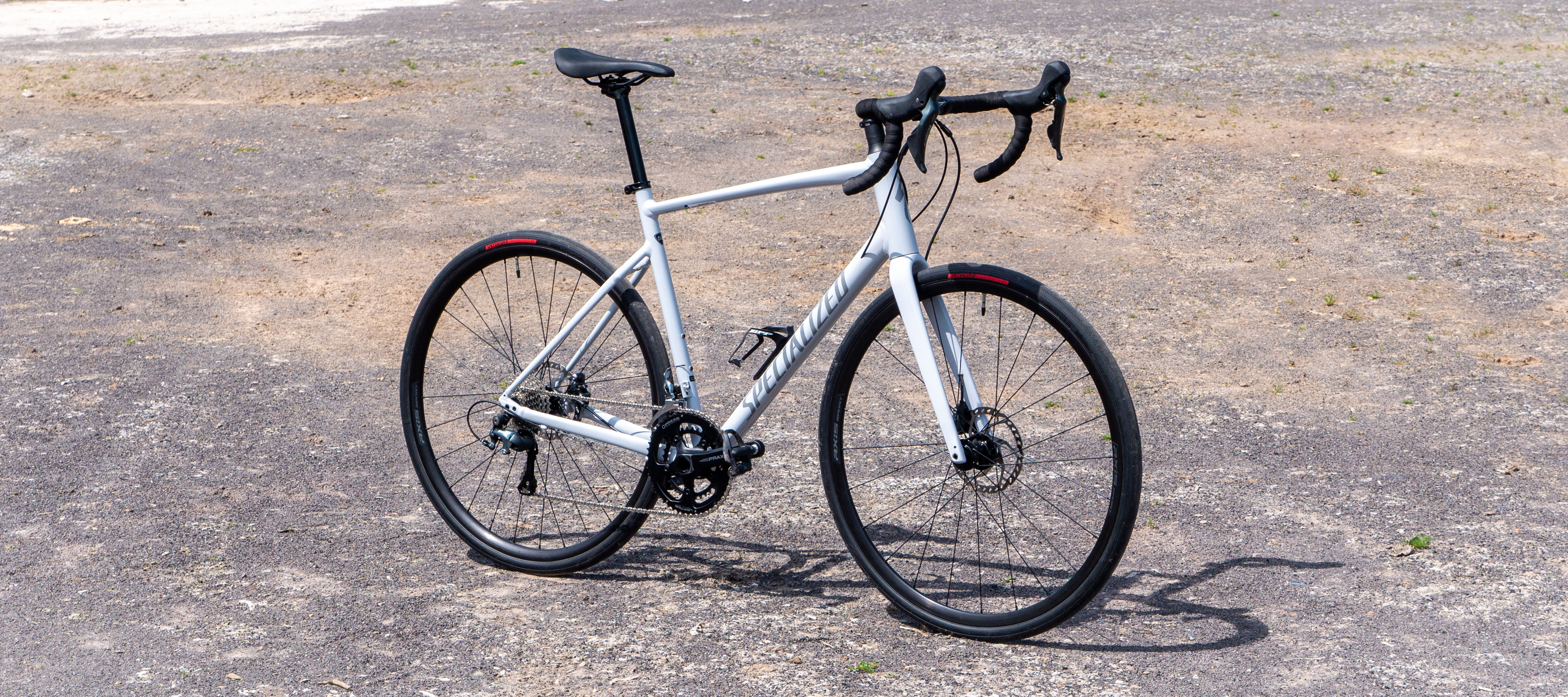
Specifications
Reasons to buy
Reasons to avoid
✅ You want a robust starter bike: The Allez is still the quintessential first road bike.
✅ You want modern specs: The latest iteration offers wide clearance and disc brakes.
❌ You want more choice: There are only two specs to choose from.
❌ You want a racier position: The Allez geometry is quite upright.
The Specialised Allez is a favourite first 'proper' drop bar bike for new road riders and also a good choice as a second bike or for commuting duties. Its price has increased over its predecessor though and hits £1,000 / $1,200, although in early 2025 Specialized has held it at the same level since the bike's launch in 2023.
The latest model retains the alloy frameset but now has disc brakes in place of rim brakes and clearance to fit 35mm tyres. Along with mudguard mounts, which reduce to 32mm the space for tyres, and internal cable routing it's a modern spec, although maintenance costs should be kept down by the straightforward design.
The Allez range stretches only to the entry-level bike fitted with Shimano Claris 8-speed and mechanical disc brakes and the Allez Sport, which I reviewed, which has 10-speed Shimano Tiagra and hydraulic disc brakes. The Allez Sprint is a more racy bike with a different frameset.
There's weight to be lost and performance gains to be had from some minor upgrades, as when I fitted lighter wheels and tyres. The bars and saddle may be basic items, but they do the job and there's plenty of gear range on offer, although it could be extended by changing the 11-32T cassette fitted to an 11-34T.
The progression path from the Allez, if you want to upgrade and stay with Specialized is unclear though, with the lowest-priced carbon framed bike, the Aethos Sport double the price of the Allez Sport.
Read our full review of the Specialized Allez Sport for more on our ride impressions.
Best steel road bike
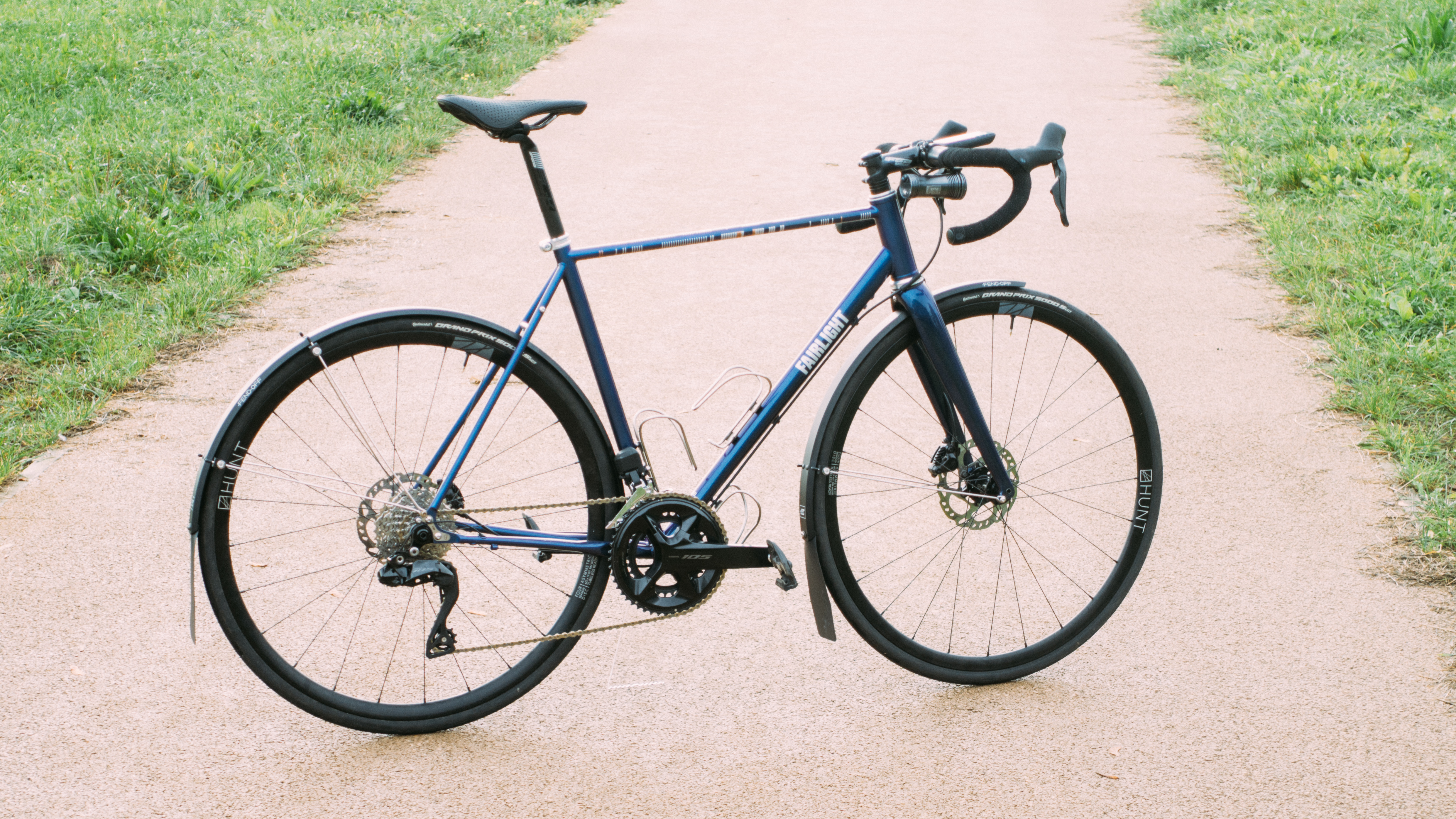
Specifications
Reasons to buy
Reasons to avoid
✅ You want great ride quality: The Strael is sublime to ride.
✅ You want a bike for the long run: The durable frame is easy to maintain and upgrade.
❌ You want it now: Fairlight's build-to-order model means a wait for your bike.
❌ You want aero: Round tubes and external cabling do not an aero bike make.
The Fairlight Strael is made from Reynolds 853 steel, its strongest option apart from stainless, with classic road bike looks and geometry. There's a wide range of frame sizes and you can choose a Tall frame if your dimensions require.
Clever details include a dropout that can accommodate either a Shimano Direct Mount or a SRAM UDH mech hanger. There's a full range of mounts to satisfy the endurance rider too, with the Transcontinental Race won twice on a Strael.
Fairlight builds the Strael to order, which allows you to choose your spec, choices including four different Shimano groupsets, a wide range of wheels and tyres and different cockpit dimensions. With the demand for the Strael, this does mean a delay in getting your bike after ordering though.
Despite the fairly modest price, reviewer Will reckoned that the Strael was the best bike he'd ridden, with sublime handling, sharp cornering and stiffness that encourages long seated efforts. There's huge upgrade potential and the Strael should be easy to maintain for years to come.
Read our full Fairlight Strael 3.0 review for more details of why Will says it's a bike he would buy.
Also consider
We've reviewed many other bikes at Cyclingnews, Here are our picks of some of the other best road bikes that we rated highly in our reviews.
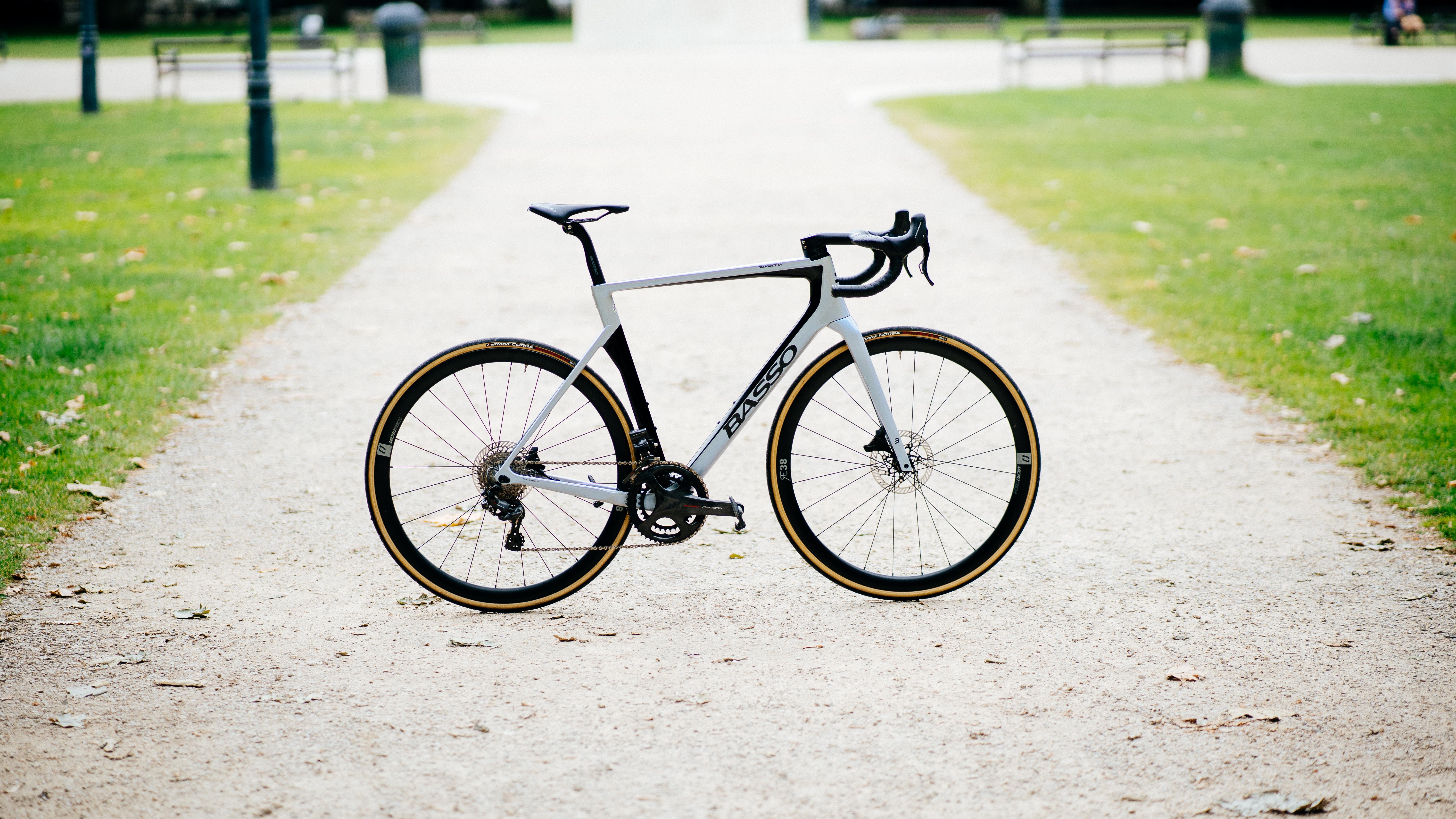
We loved the looks and handling of the Diamante SV, but the creaky cockpit was frustrating and the wheels were sub-par for the price. In January 2025, Basso introduced the SV, which may help address some of the Diamante SV's shortcomings.

The Venta R is another Basso bike with good looks but similar shortcomings to the Diamante SV. It's a lot cheaper than the Diamante SV though and worthy of upgrades to bring out its potential as an all-day ride.
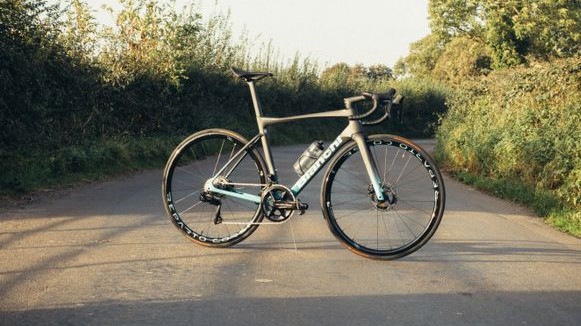
At 6.6kg, the Specialissima is low in weight and high on performance, with an aero frame. The 26mm TT tyres aren't the best choice for UK roads though.

A head-turner, the Teammachine R is fast and aero, with a high-quality spec. It's very expensive and the handling is a little twitchy though.
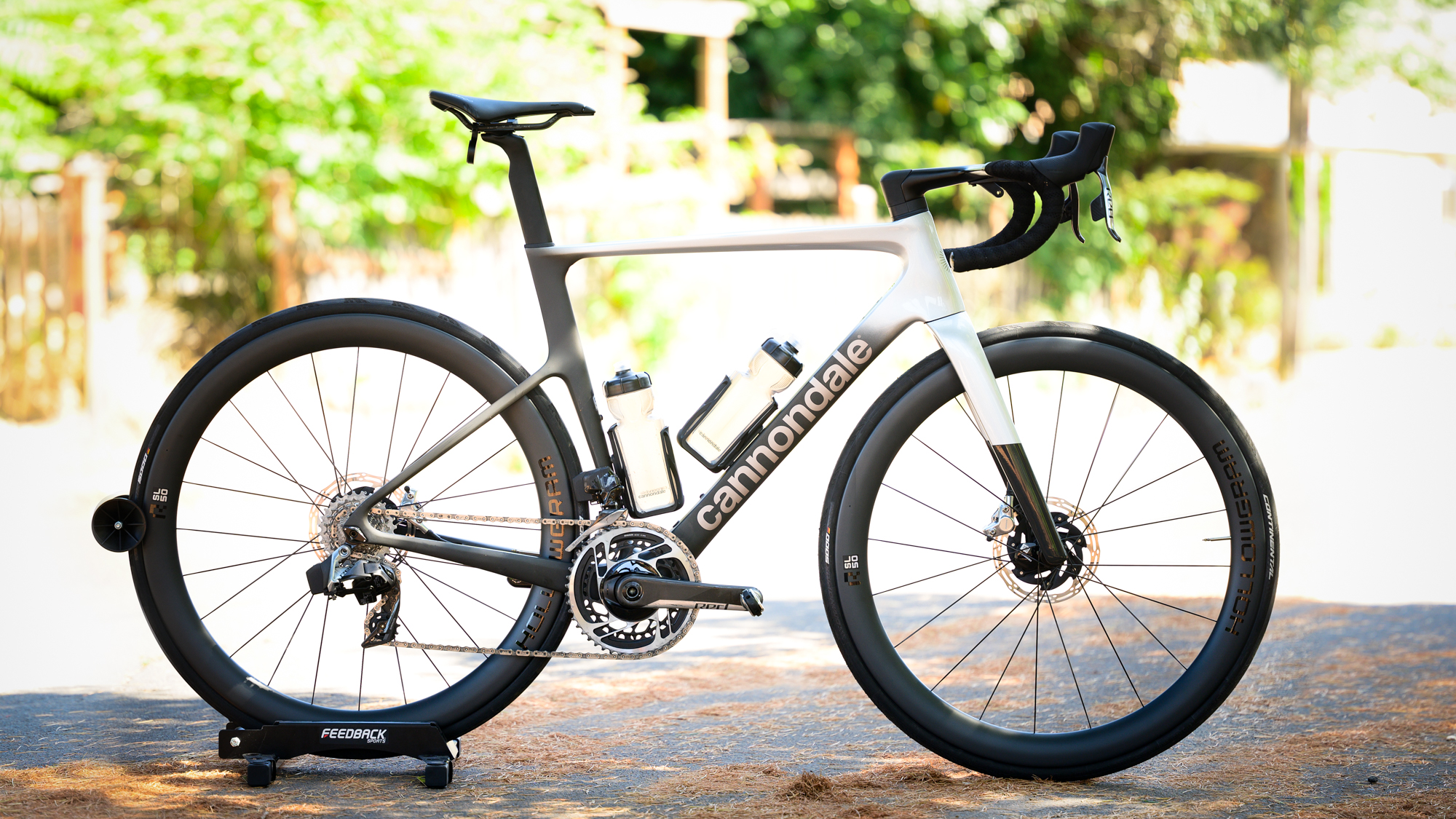
The fourth generation SuperSix Evo swaps to industry standards, and is more aero and a fast ride. It's expensive, particularly in LAB71 guise and lacks a power meter though.
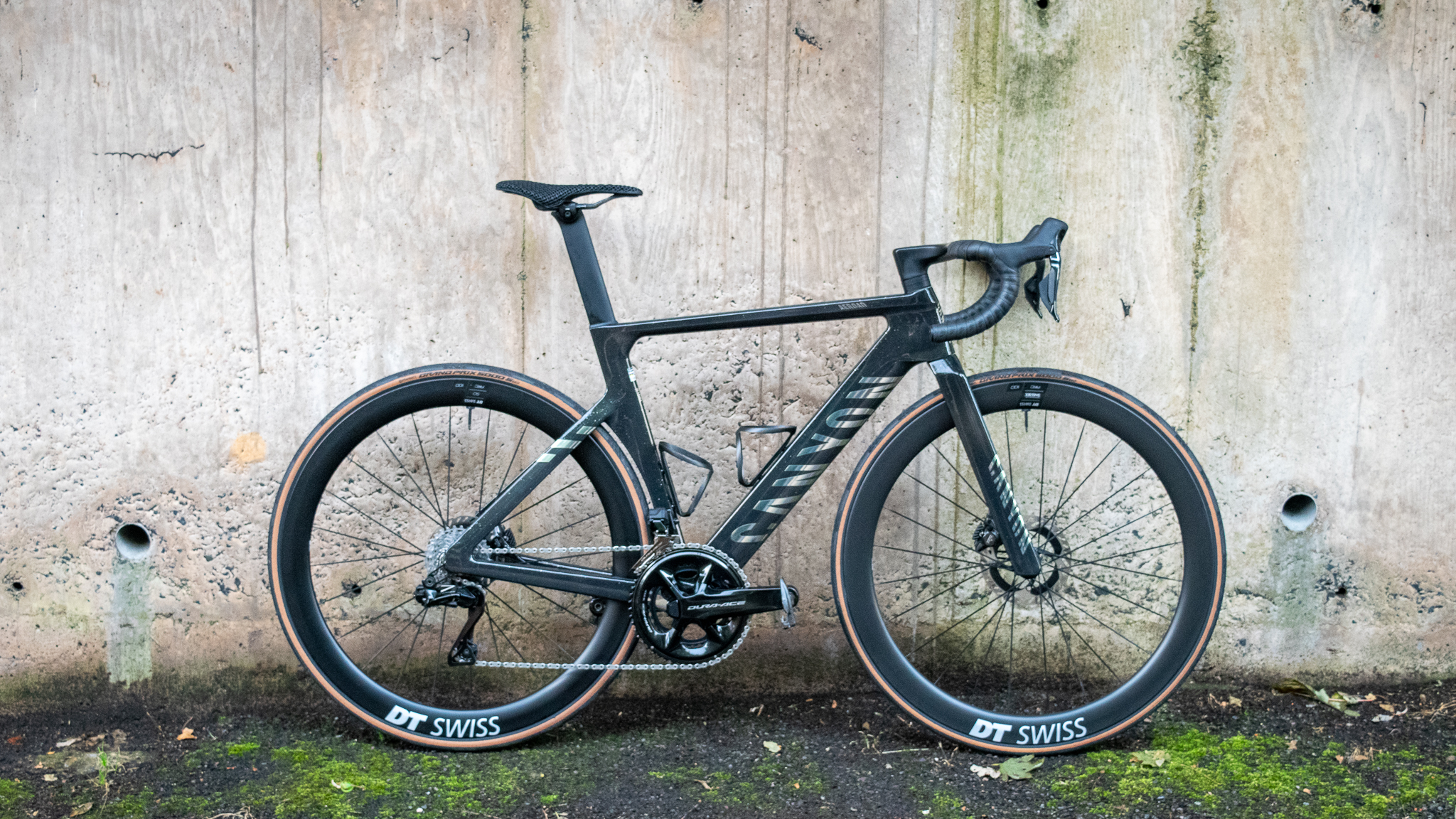
Small changes to the Aeroad up the aero quotient and make it easier to live with. It's still lower priced than the competition, although the ride on the 25mm front tyre feels a little harsh.
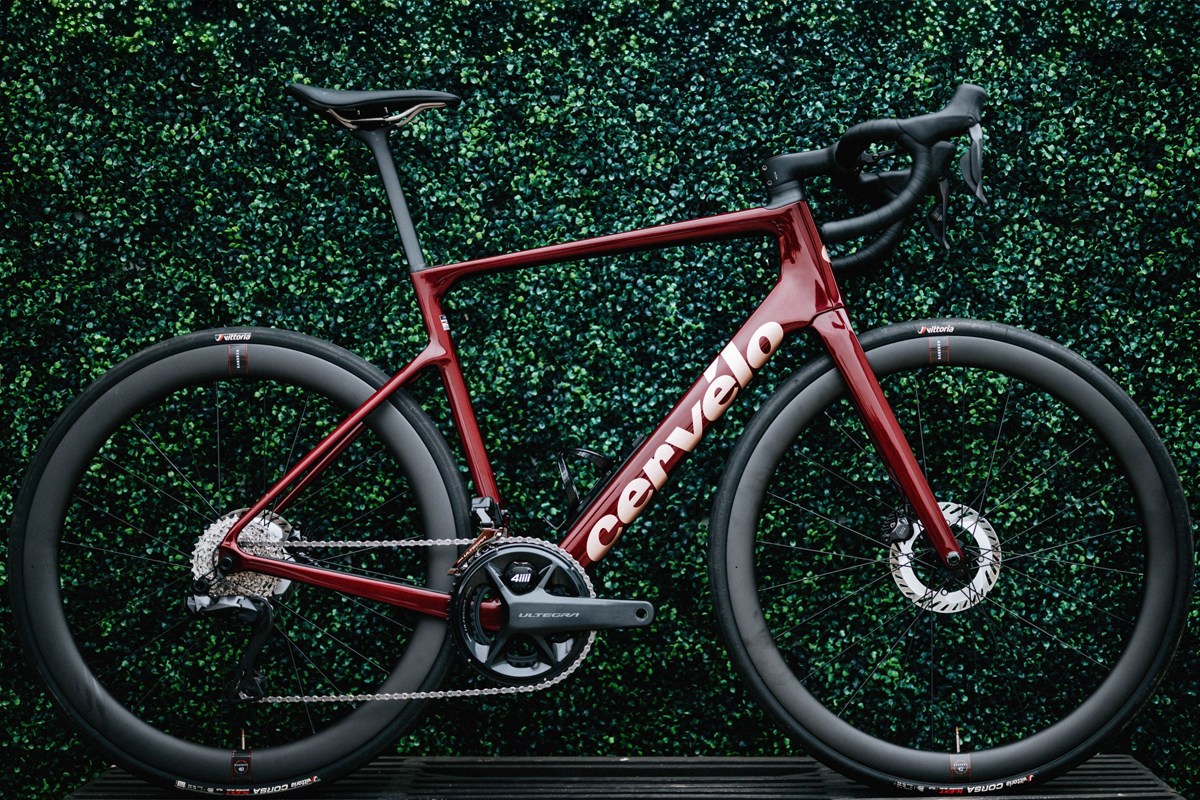
We've not ridden the latest version of the Caledonia, launched in mid-2024. But updates are modest from the previous bike, which we had on long-term review, with Cervélo claiming that they increase compliance. Cables now run internally and there's new in-frame storage.
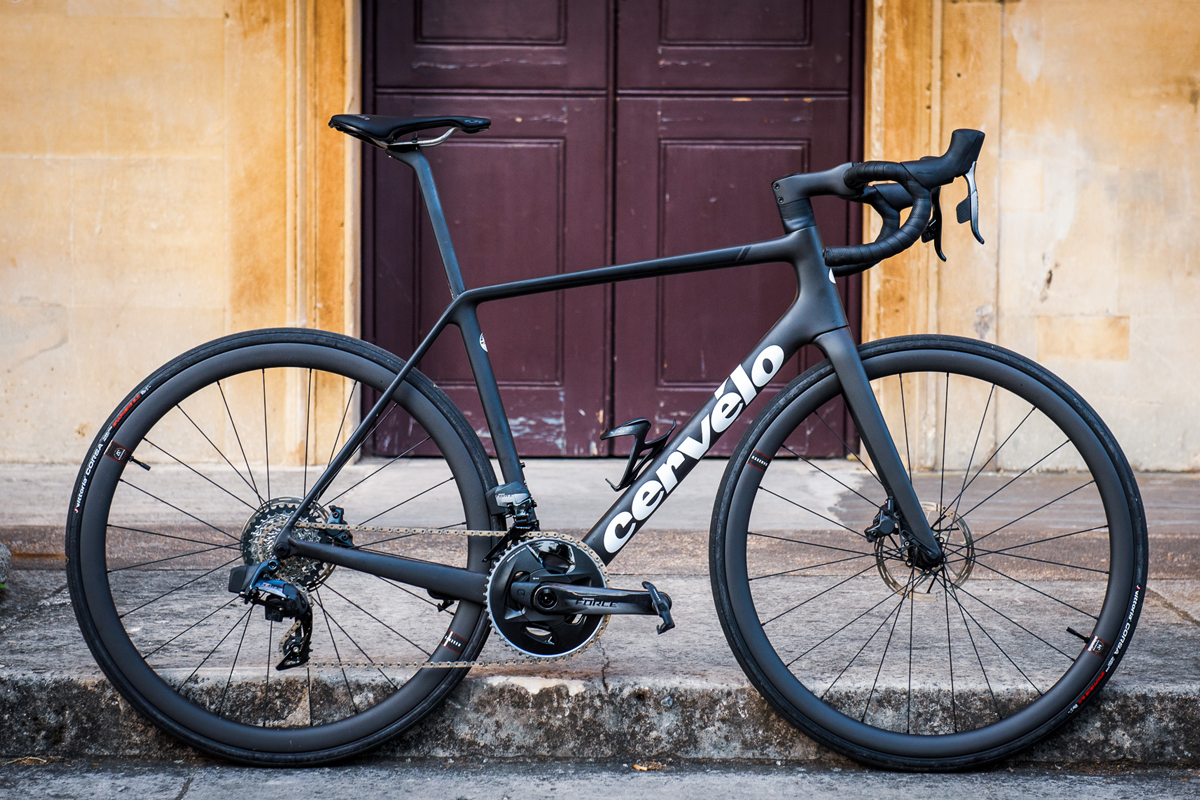
We weighed our test Cervélo R5 at 7.4kg, the 703g claimed frameset weight is as low as a bike with aero pretensions goes and the 34mm tyre clearance offers versatility. The price is high for the spec though.
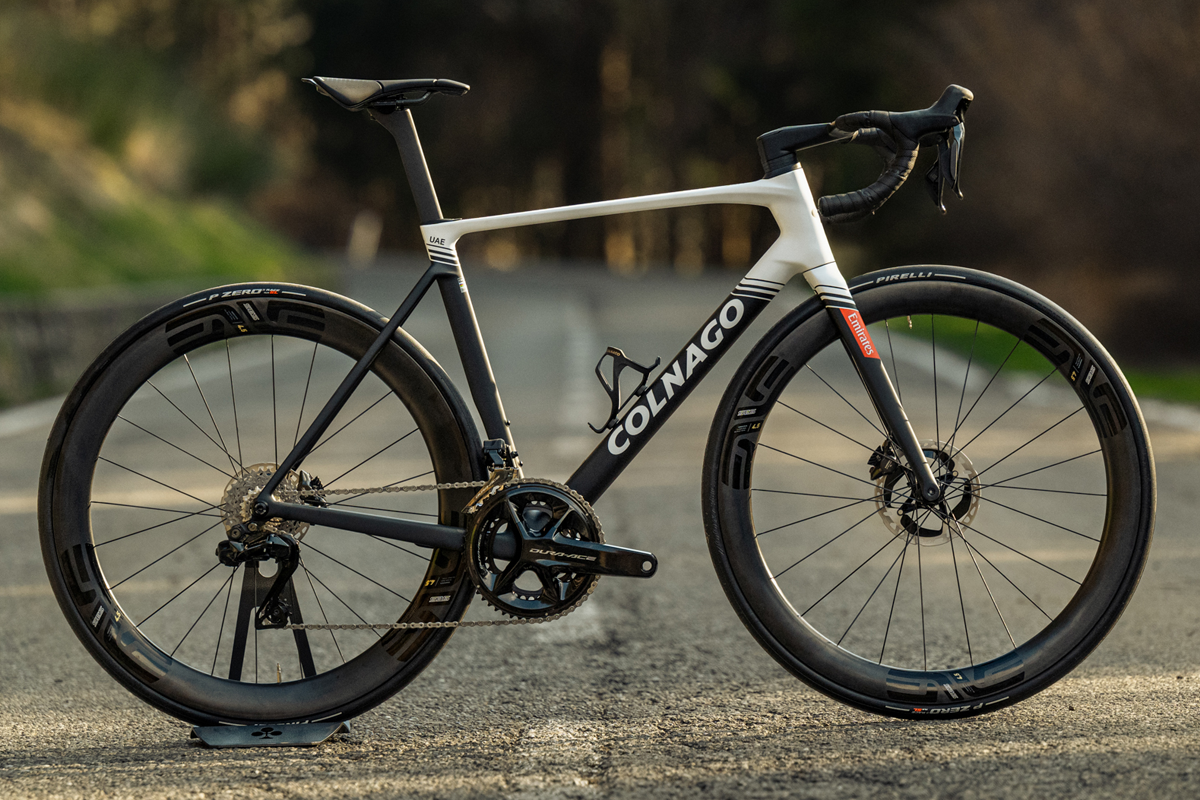
The race-winning Colnago V5Rs is stiff and climbs well, with a slightly slack geometry that helps to improve handling at speed. It's stiff and long and feels as if it's designed for the pros - great if you ride at pro speeds, but maybe not best for an amateur.
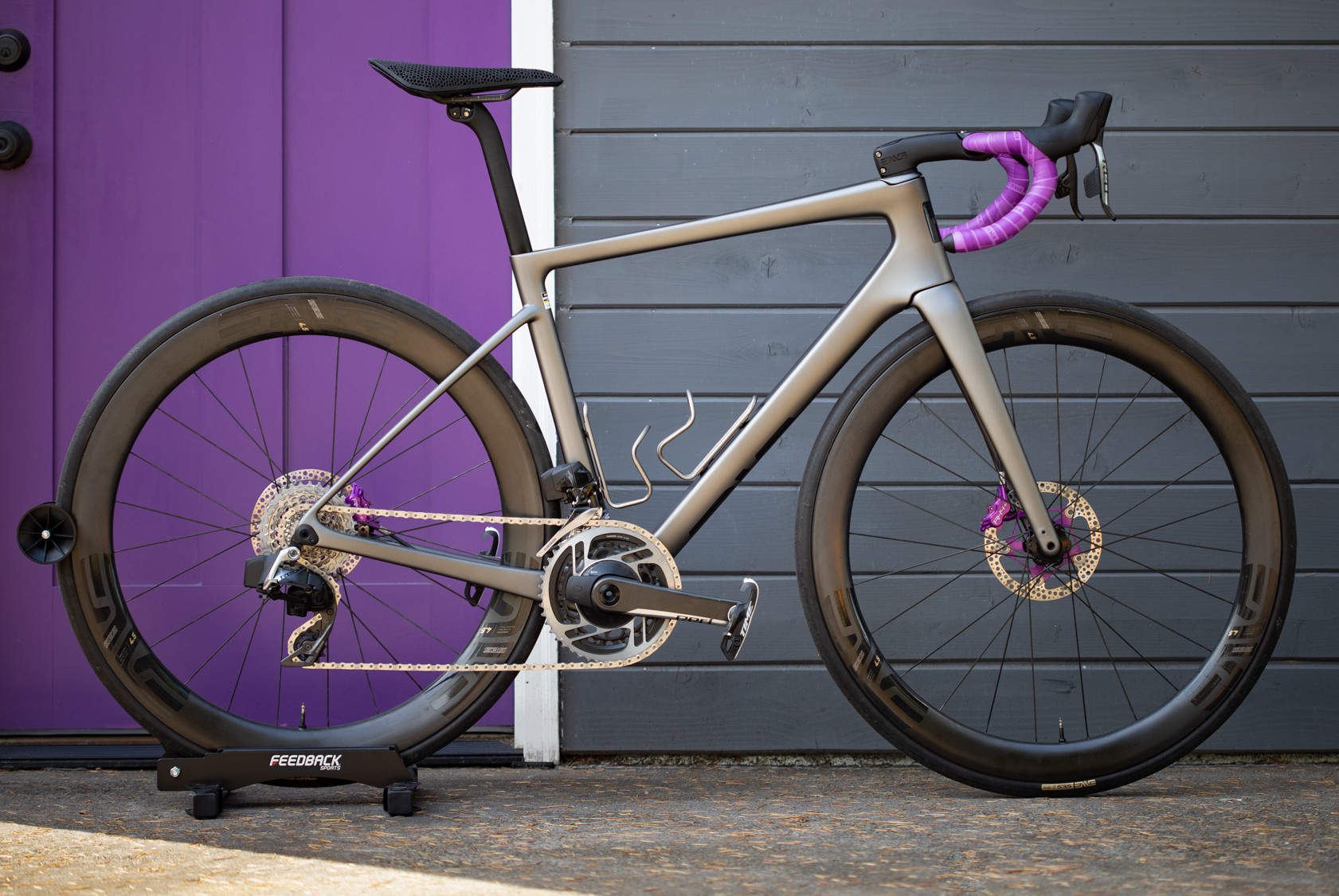
It's a lightweight/aero bike ridden by pros but comes with 35mm tyre clearance and mudguard mounts. The Enve Melee is versatile and good-looking and you can build it as you like to suit your ride style.
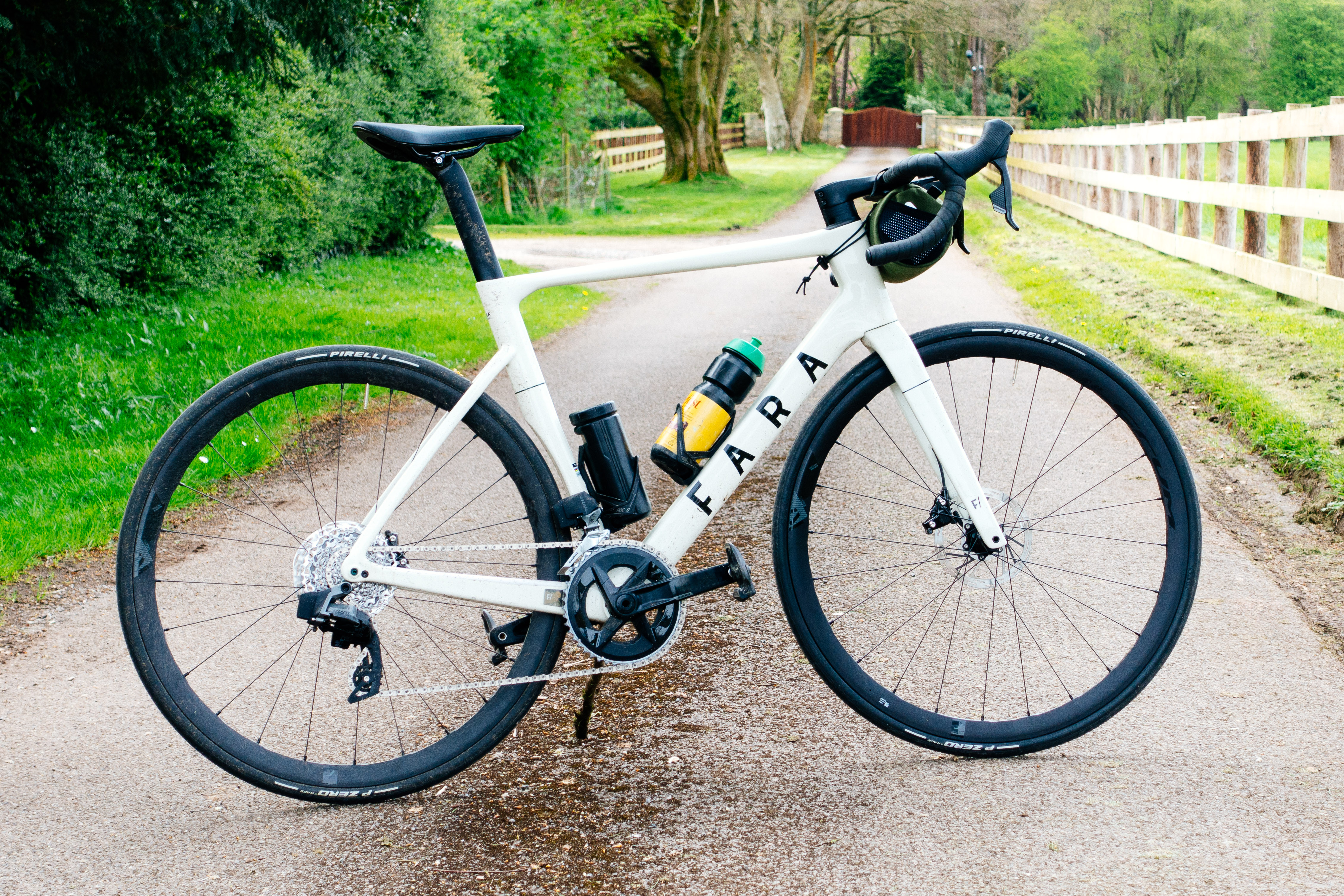
We liked the ride of the Fara F/Road and the bike's looks. It's responsive, although the wheels are due an upgrade and the price-to-spec ratio is poorer than the competition.

The Giant Propel is now lighter and more comfortable, so it's a genuine all-rounder. It rides well on flat and rolling roads but lacks a little snappiness and feels best with deeper wheels.
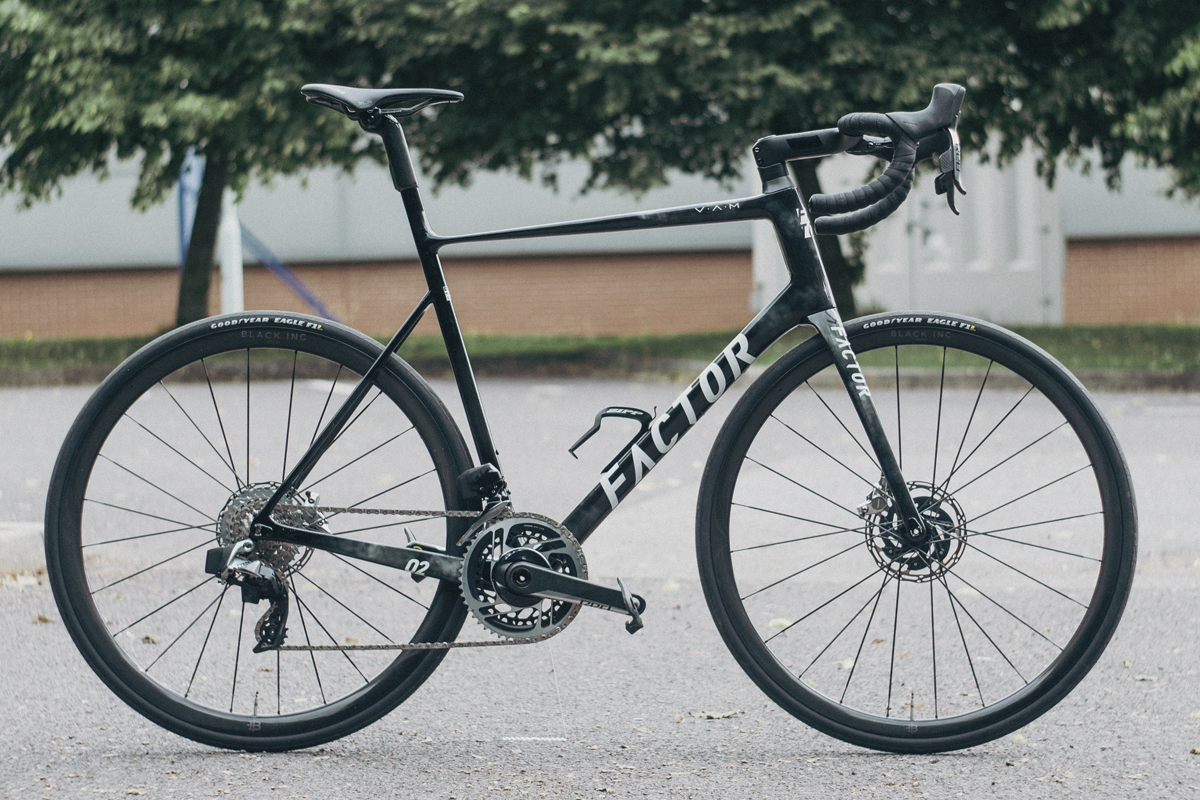
Look's aero-lightweight pro-level 795 Blade RS is stiff and responsive, although the 7.4kg weight doesn't quite match the competitors and the position is unashamedly racy.
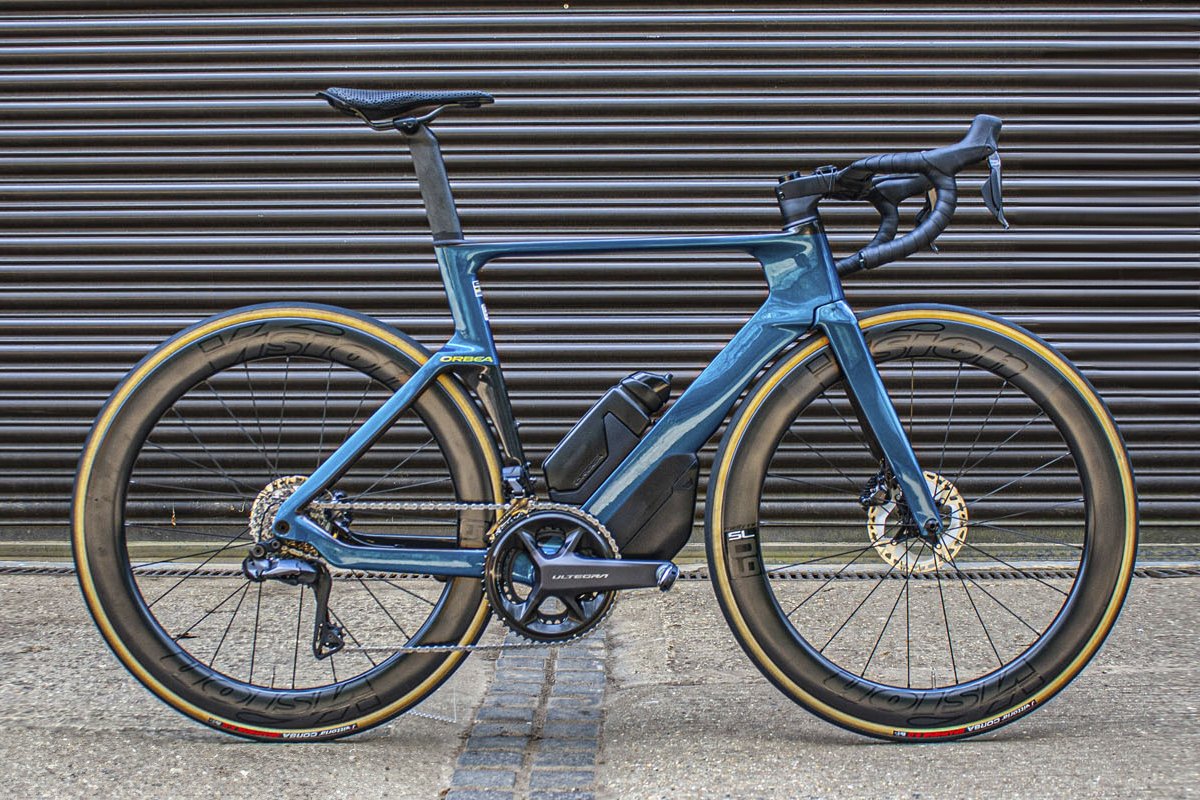
The Orca Aero looks fast and rides fast too. The removable pod under the downtube should provide aero gains as well as storage. It too is a little heavy at 8.6kg though.

The Ridley Falcn RS offers a low 7.4kg bike weight and aero features. It's stable and fast, although we'd like to see narrower bars as an option.
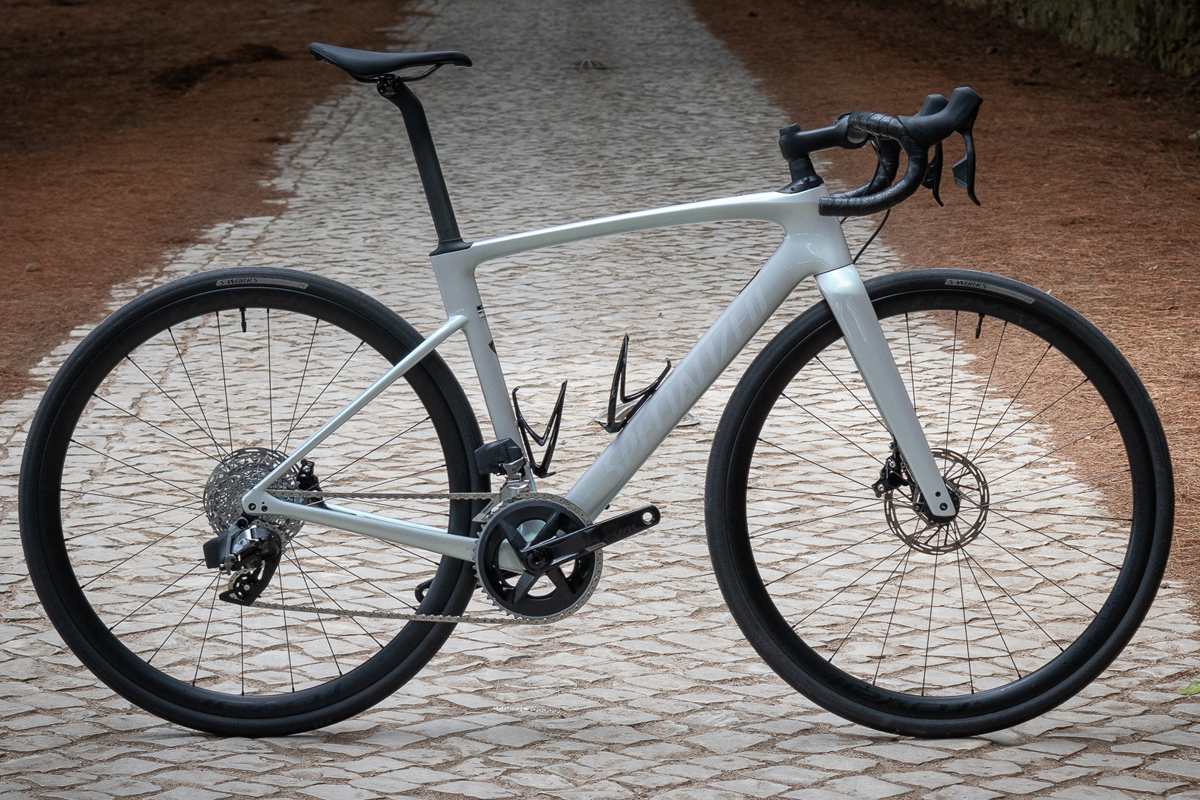
The Roubaix SL8 adds extra tyre clearance and, for the first time, mudguard mounts. It's still fast and very comfortable and the Future Shock 3.0 headset should be easier to maintain.
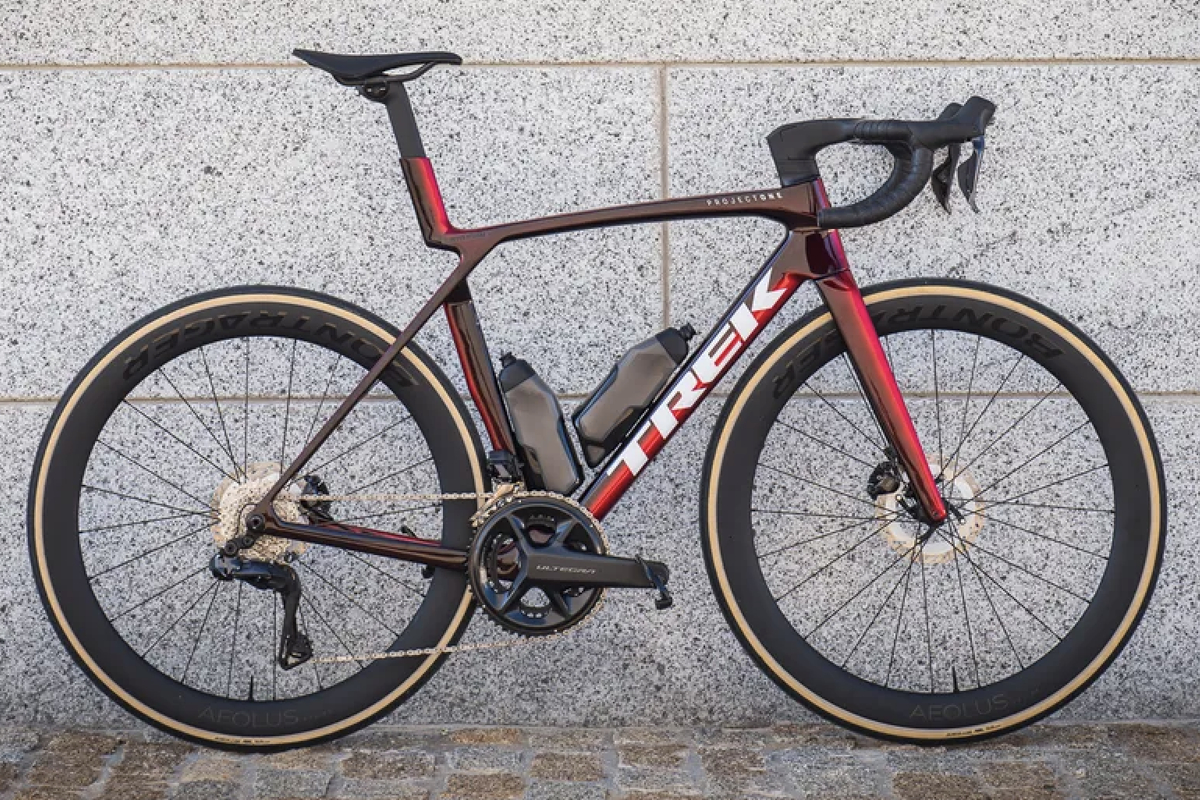
The Gen 8 Madone is blisteringly fast and the top-spec weighs just 7kg. It's more comfortable than the Gen 7 bike, but just as aero. It comes with a big price tag though.
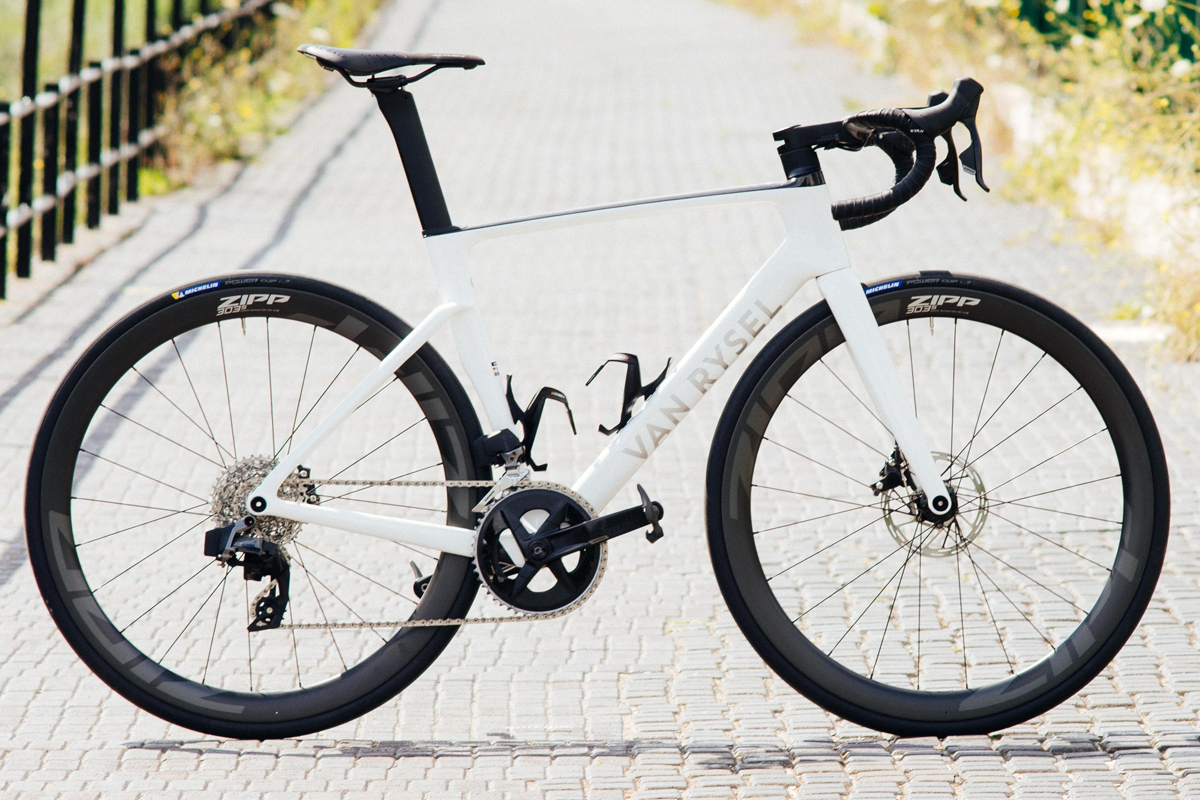
The Van Rysel RCR marks an impressive entry from Decathlon's performance brand, but the non-Pro version tested doesn't offer quite the value we'd expect based on the headlines.
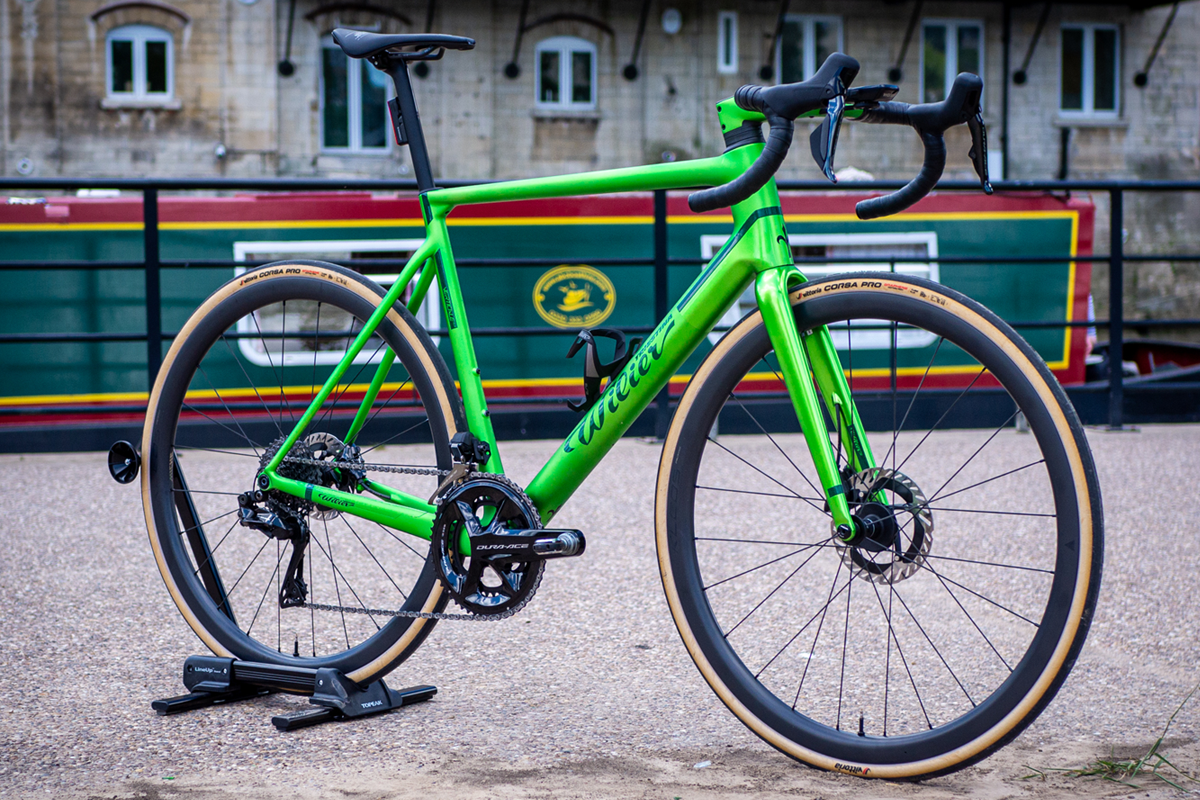
Wilier's Verticale SLR climber's bike weighs just 6.8kg and has classic looks. It rides well, but we'd like to see lighter wheels on a bike at this price.
How to choose the best road bike for you

We're well aware there is a bewildering array of options out there. Aero, lightweight, endurance, it can be a confusing landscape so it's natural to have a couple of questions.
Fortunately, we have a whole guide on how to choose a road bike, so if you're absolutely awash with confusion then head there, but otherwise, we'll cover the basics below.
Do I need a road bike?
This is the most important question and one that will depend on the type of riding you intend to do. If you are only going to ride on the road then a road bike is a natural choice, but if you're going to be riding a bit of gravel then perhaps one of the best gravel bikes or best gravel race bikes will be a better choice.
Likewise, if you're primarily going to use it for commuting then you may well be better served by one of the best hybrid bikes, with flat bars and designed for transport rather than speed.
Don't discount the best electric road bikes either. It can be difficult to tell that there's a motor on board, they're low in weight and they certainly help when you get to a hill.
What sort of road bike do I need?
Another question that it's worth considering carefully.
Are you going to be racing? In which case an aero road bike or all-around race bike may well be the ideal choice for you. However, if you're riding for the fun of it, doing long miles, or weekend club runs you may get more enjoyment from the additional comfort offered by an endurance road bike.
Likewise, the minor weight savings offered by a lightweight climbing bike can make all the difference if you're heading up Alpe d'Huez, but if you live in Norfolk or somewhere else flat as a pancake then you'll not really gain any benefit, although the fast acceleration can be addictive.
Which groupset is best?
At the top end of things, where 12-speed, all-electronic shifting is the norm there is little to separate the main players, so it's all a matter of personal preference.
At the mid-range, now Shimano has introduced Di2 electronic shifting at 105 level, there is still nothing significant between Shimano and SRAM, and while Campagnolo is specced as standard on far fewer bikes it'll still compete perfectly well.
At the lower end, you'll likely find only Shimano and its Claris, Sora and Tiagra or the latest CUES groupsets. For the price they provide excellent performance, and while they don't have 12 speeds or electronic shifting they are a little more user-friendly and cheaper to maintain.
Many of the best road bikes now offer gear ratios going down to 1:1 or below, if you're concerned about cresting ascents; on the other hand, you can find bikes with narrower ranges, if you don't need such low gearing.
If you're still concerned we've a comprehensive guide to road bike groupsets to help you.
What other components are important?
Road bikes are rarely sold with pedals or will come with basic flat pedals, so choosing the best road bike pedals and pedal system for your needs is step one.
Obviously, getting the best road bike saddle that's right for you is important for comfort, as is finding the right handlebars. They're both items which can be upgraded easily and without too much expense, as are road bike tyres.
The most attractive upgrade is often to the best road bike wheels though. Many brands now fit quality wheels to their bikes, which match the price and quality of the bike. But you'll still find bikes across the price range that would benefit from a wheel upgrade.
How do we test?
The only real way to get a feel for a road bike is to put plenty of miles into it, which is what we do. Collectively we're ridden enough bikes here at Cyclingnews to know what's hot and what's not.
We'll pay attention to the handling, and see how the geometry affects things day to day and when going hell for leather. Are the tyres any good? We'll find out. Is it comfy over eight hours, or even over 18? Moreover, we'll find out if it's easy to live with too; can you swap parts easily or is it awash with proprietary bits?
We also take a selection of bikes to specialist facilities to measure their performance. We've taken superbikes and aero wheels to the wind tunnel to measure their drag, measured tyres' rolling resistance and more, with the results informing our recommendations and available in full to Cyclingnews subscribers.
There's no substitute for time on the bike, in all weathers, so if we've reviewed a bike you can be sure we've put it through its paces thoroughly to find the hidden gems and highlight any duds so you can spend your hard-earned cash with confidence.
Read our guide to how we test for more details on our review team and our pledge to readers.
The latest race content, interviews, features, reviews and expert buying guides, direct to your inbox!
Paul has been on two wheels since he was in his teens and he's spent much of the time since writing about bikes and the associated tech. He's a road cyclist at heart but his adventurous curiosity means Paul has been riding gravel since well before it was cool, adapting his cyclo-cross bike to ride all-day off-road epics and putting road kit to the ultimate test along the way. Paul has contributed to Cyclingnews' tech coverage for a few years, helping to maintain the freshness of our buying guides and deals content, as well as writing a number of our voucher code pages.
